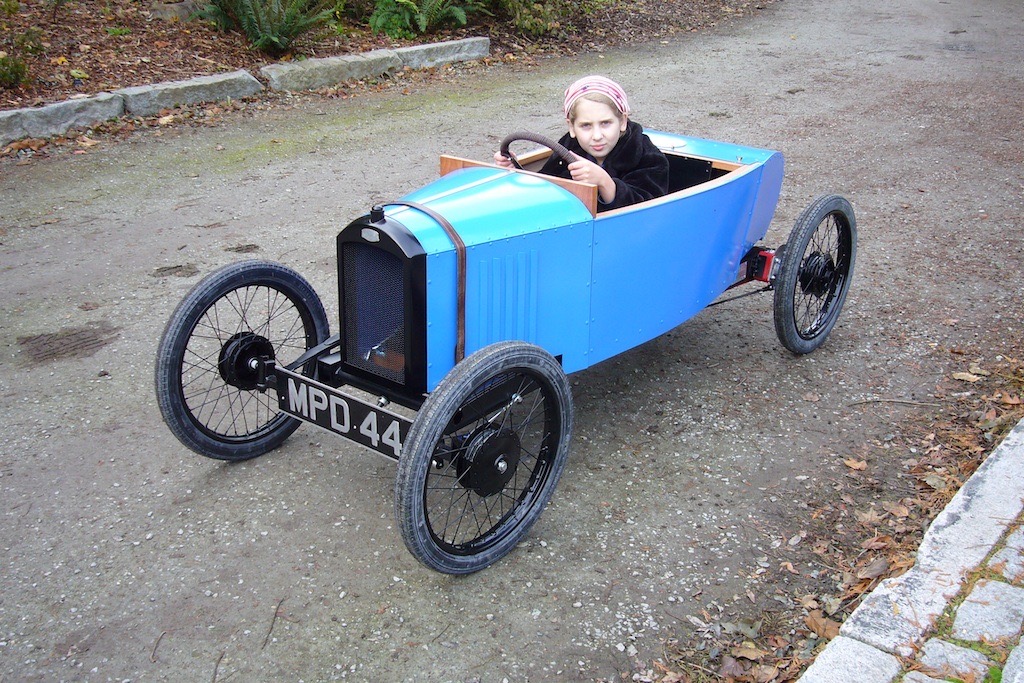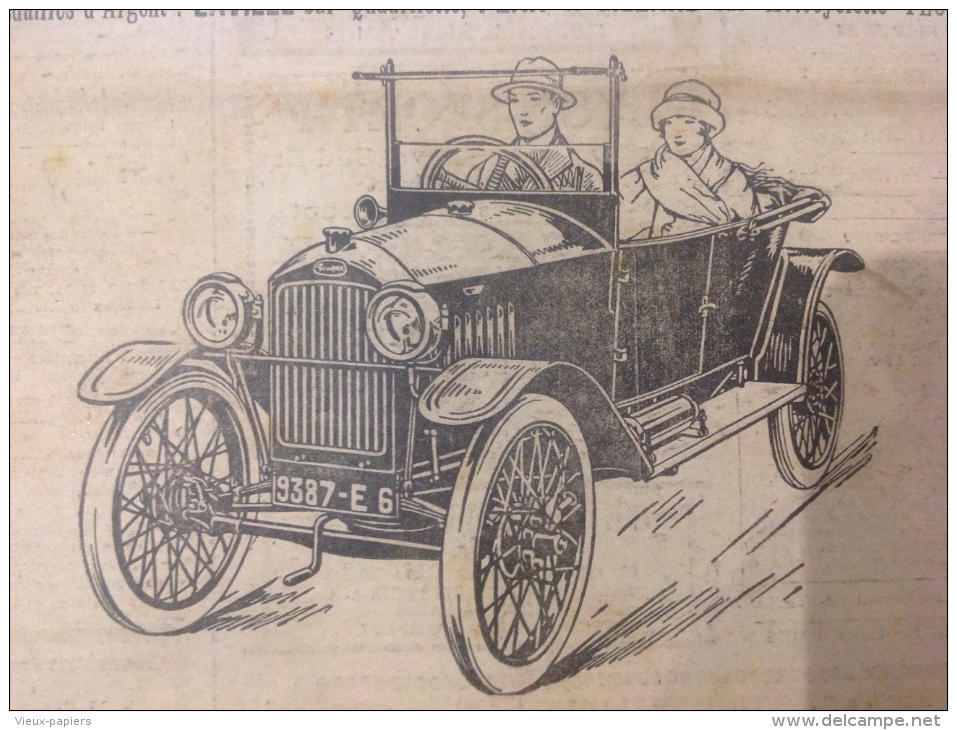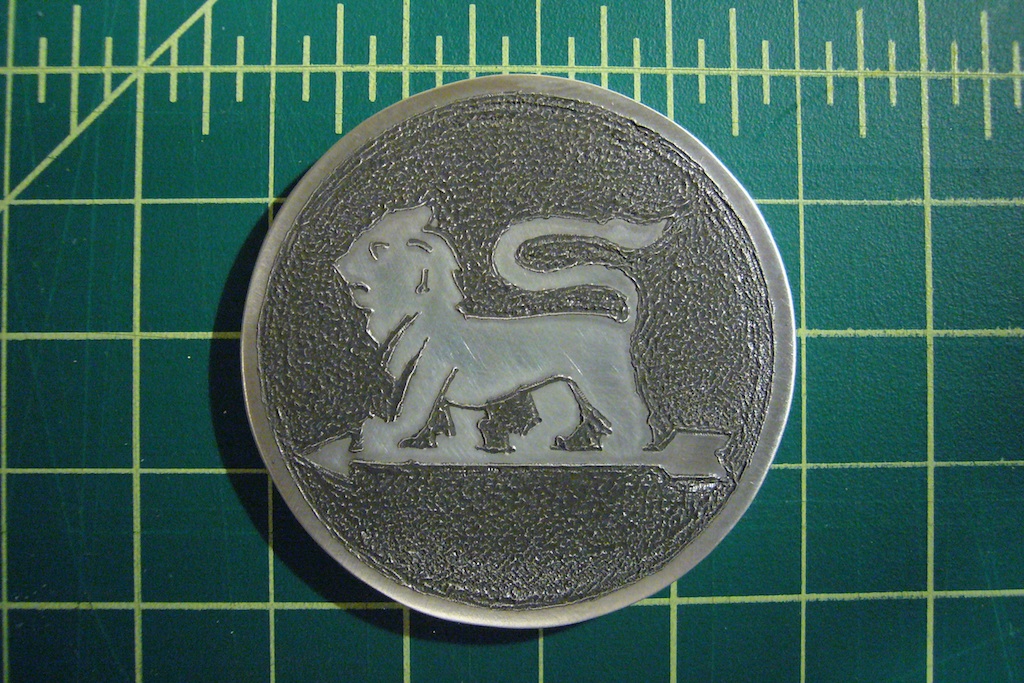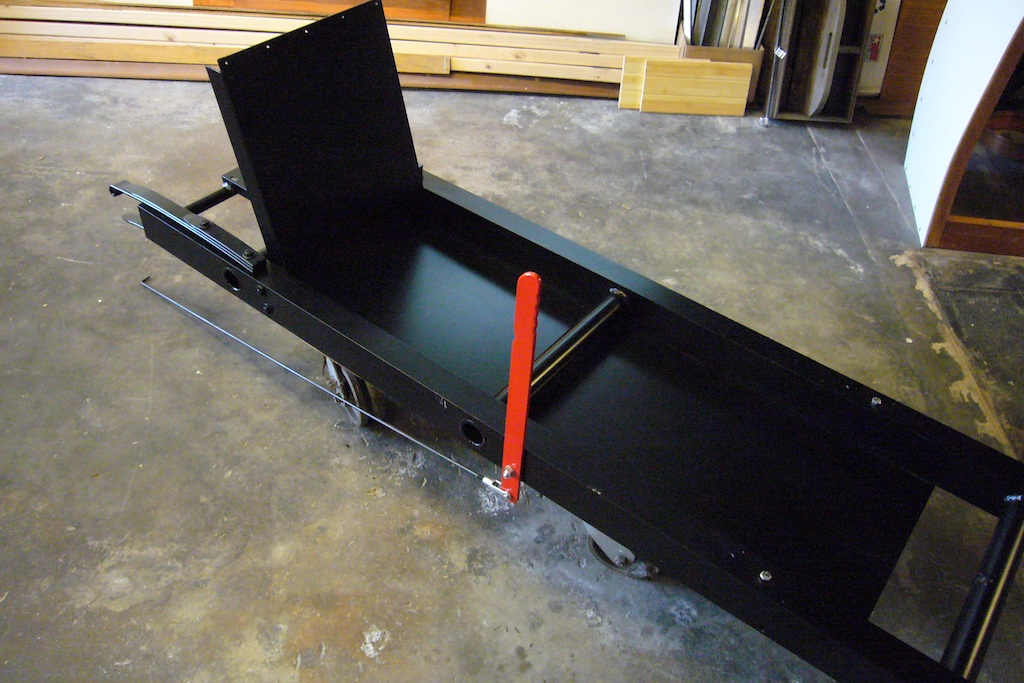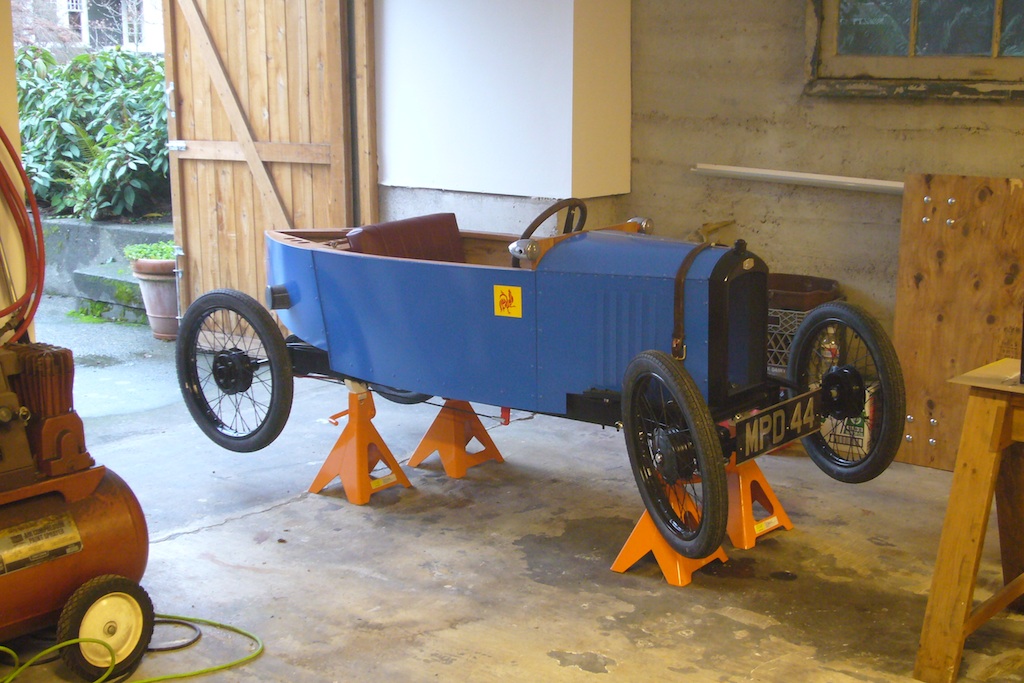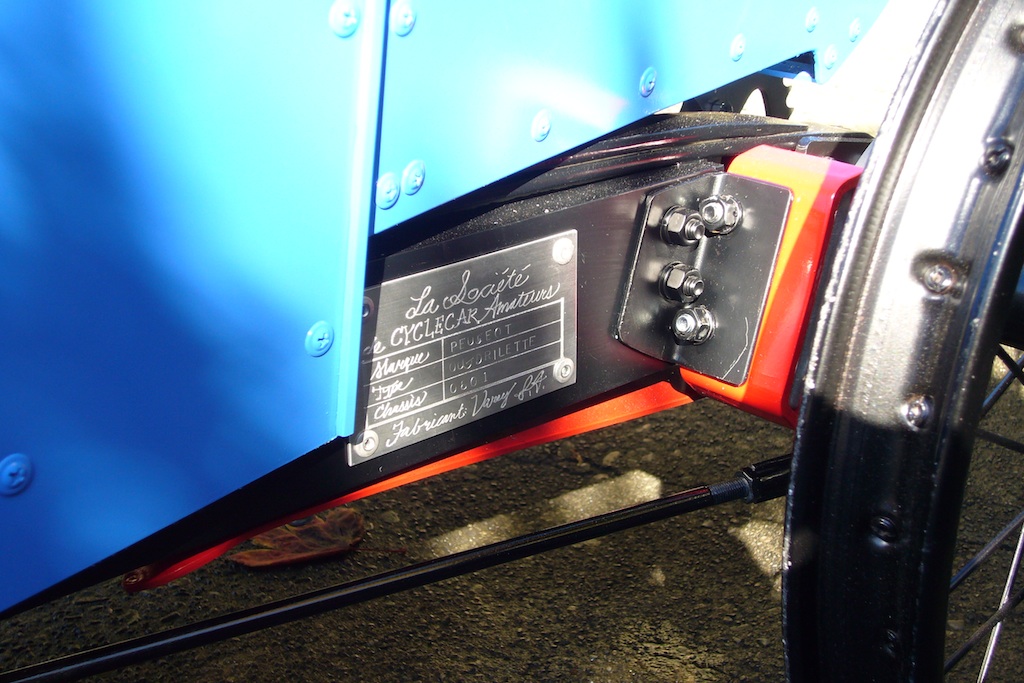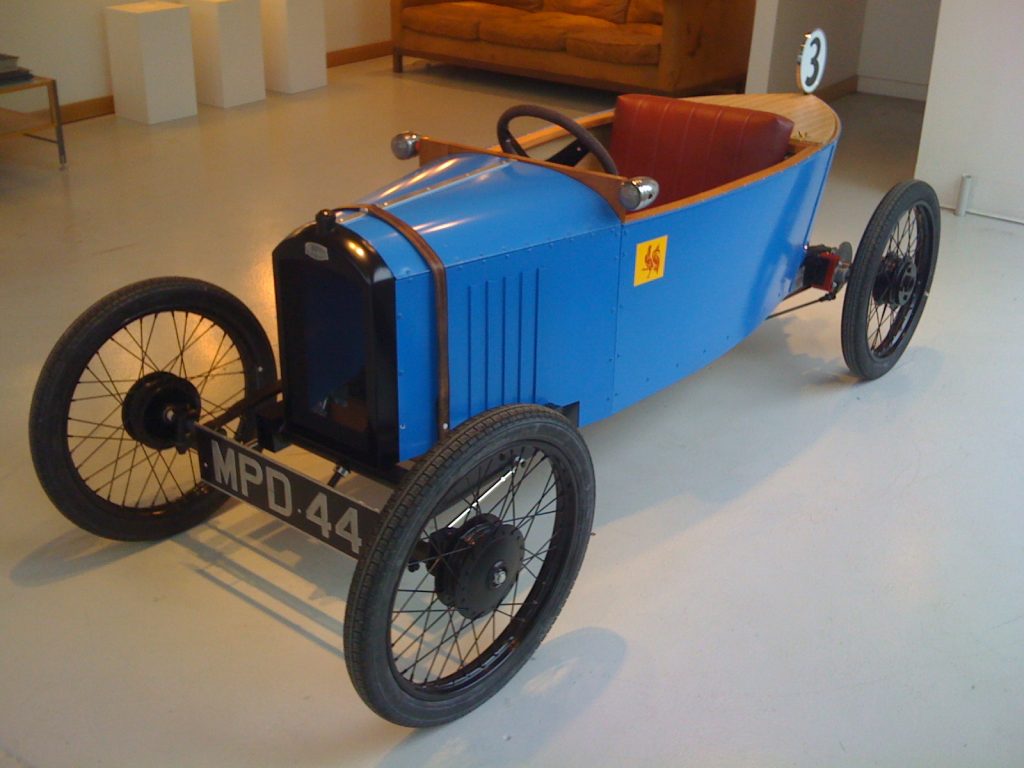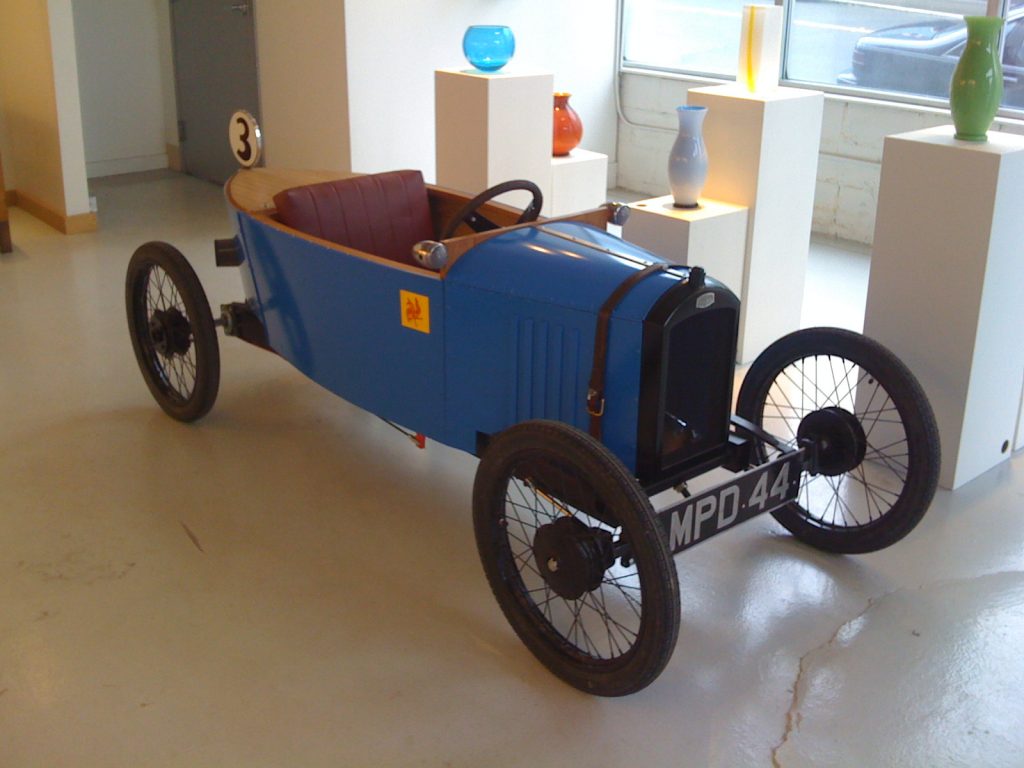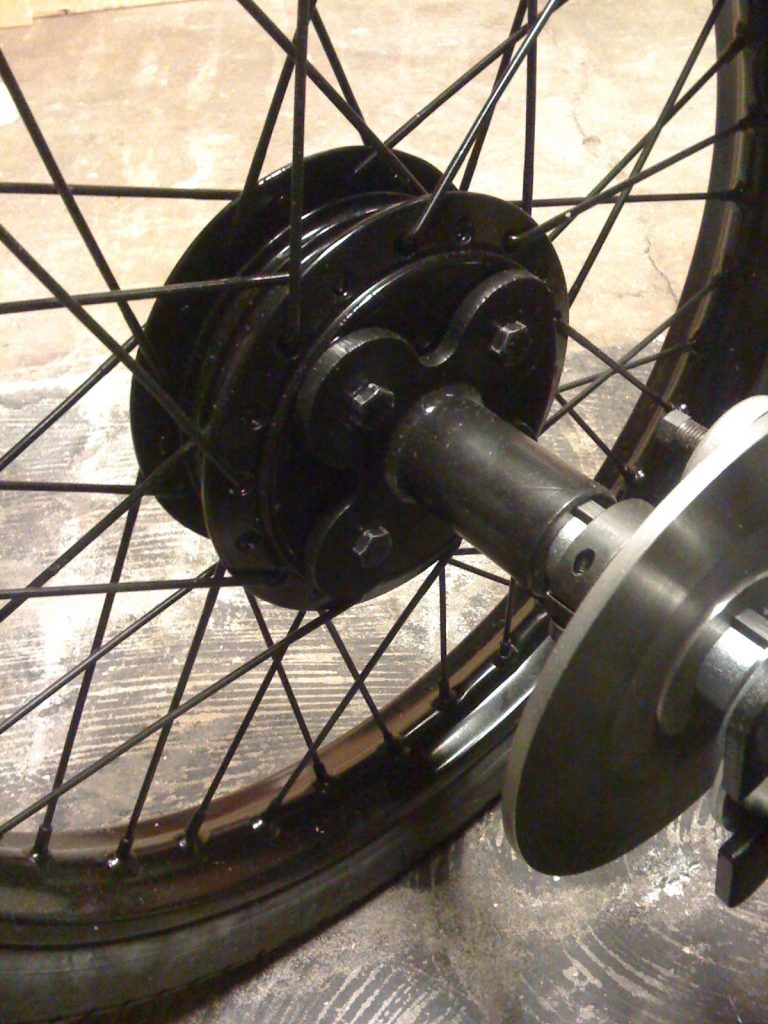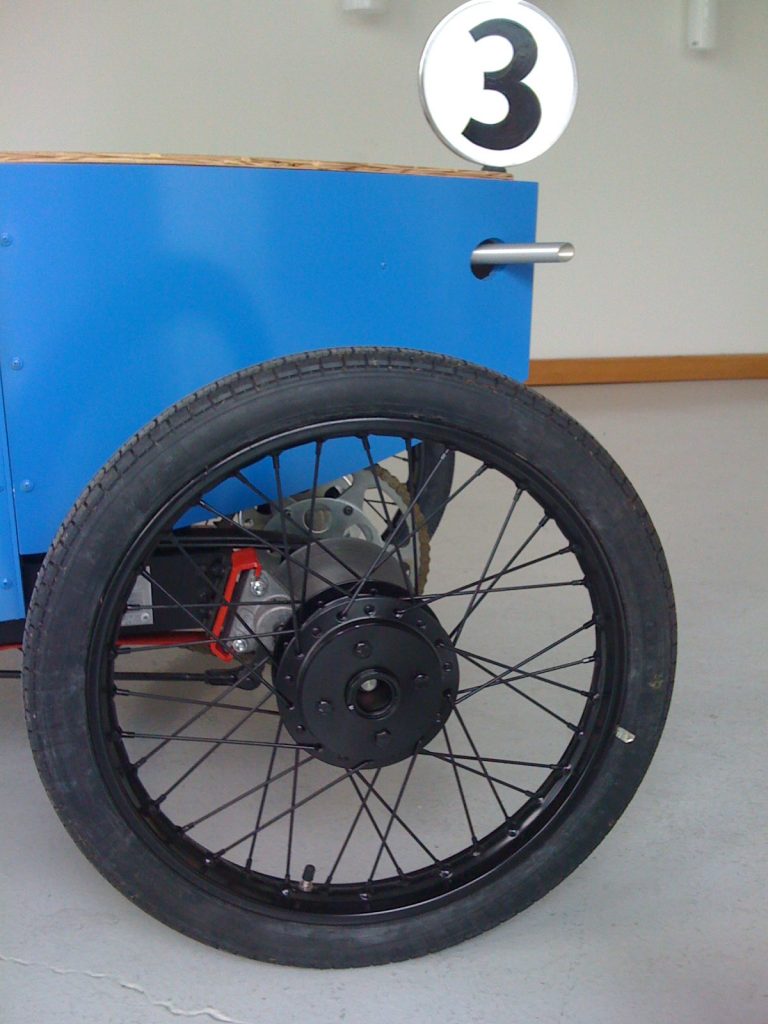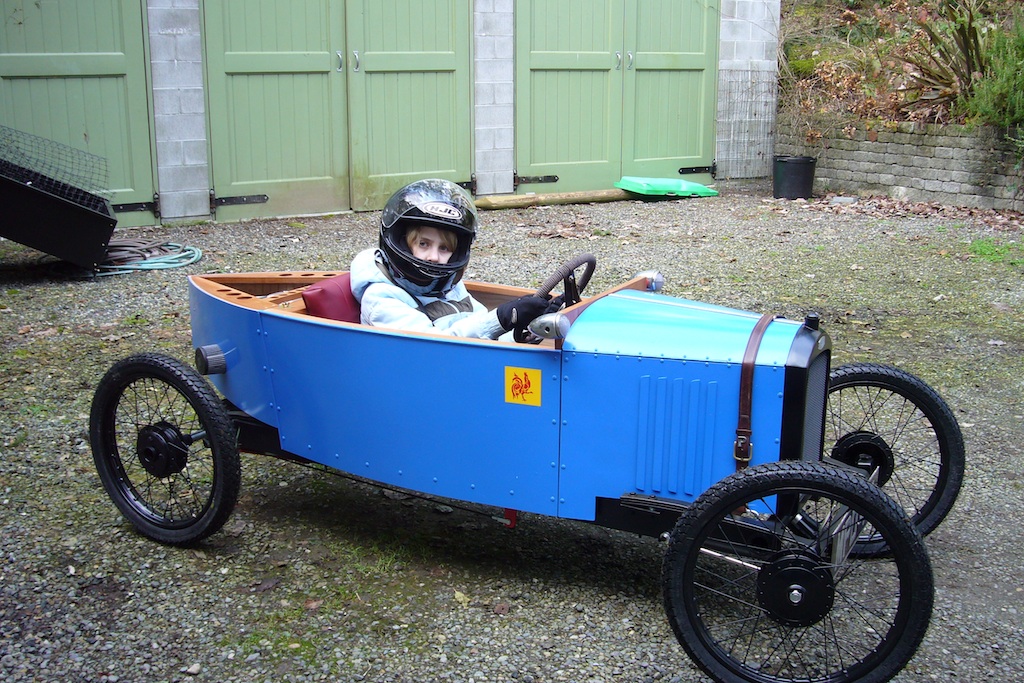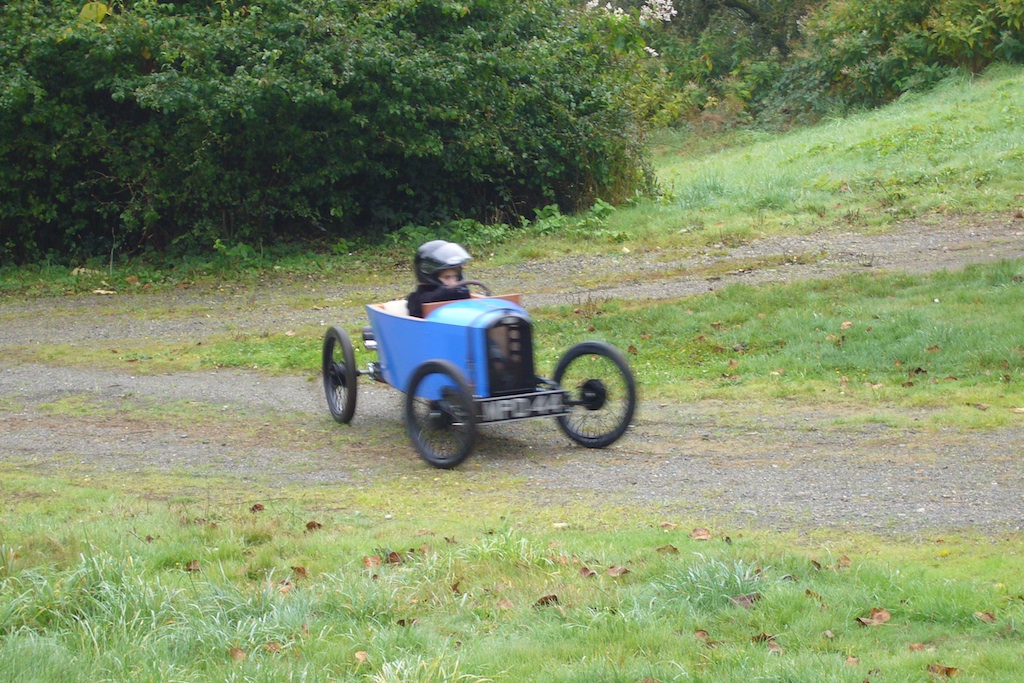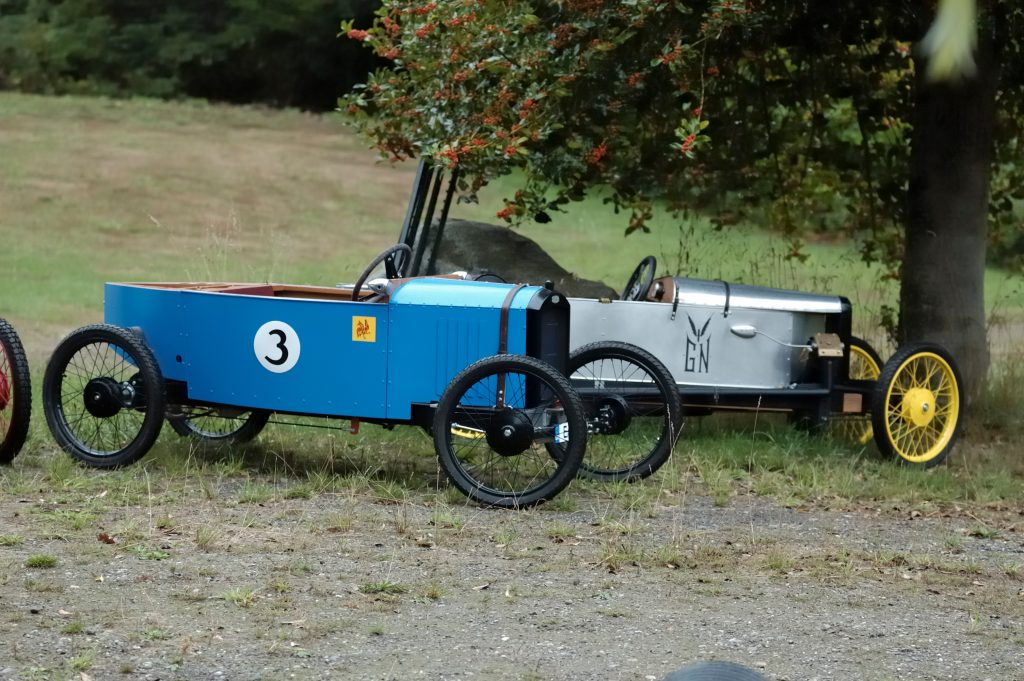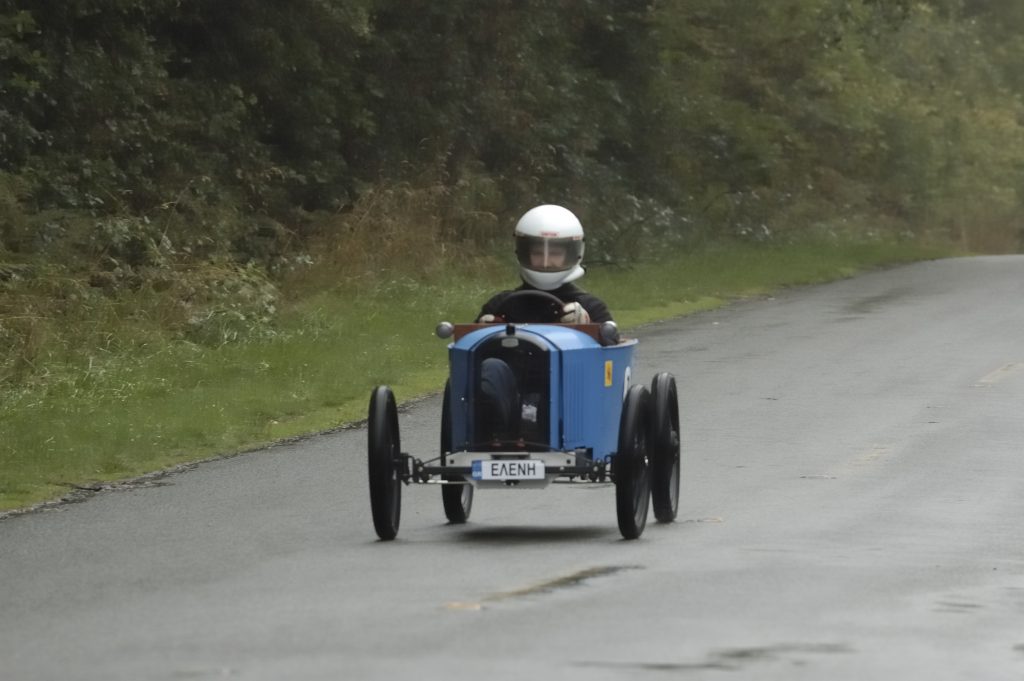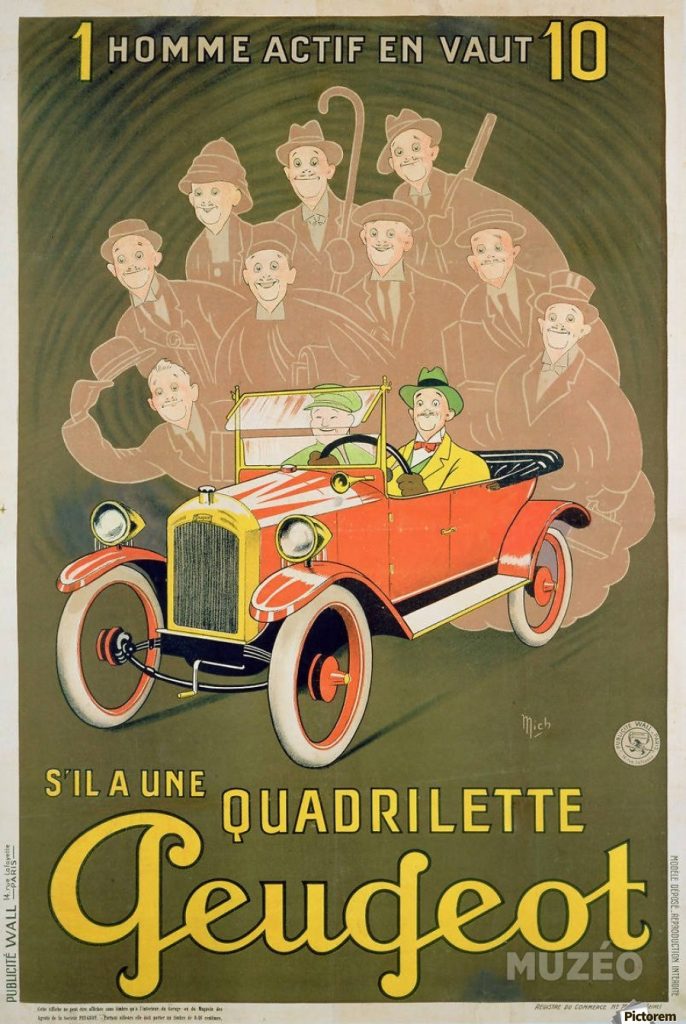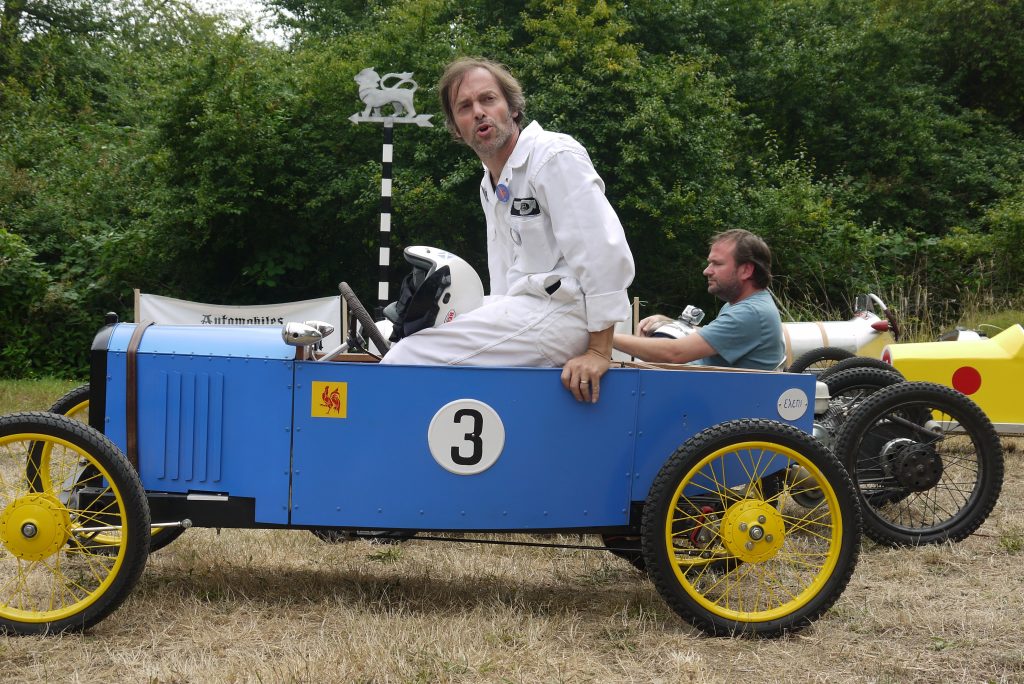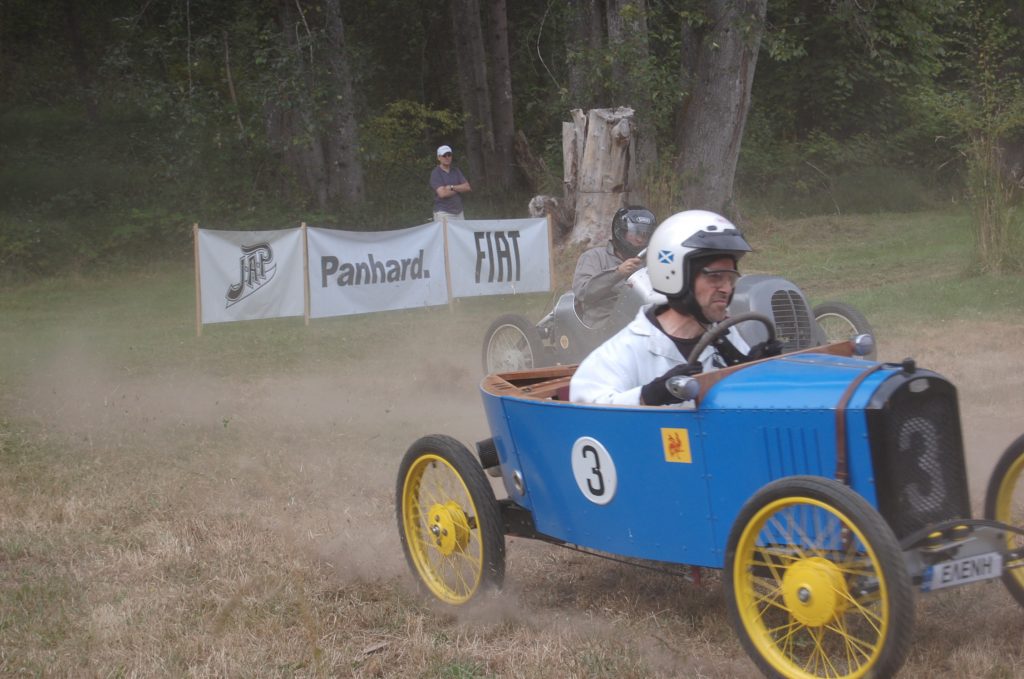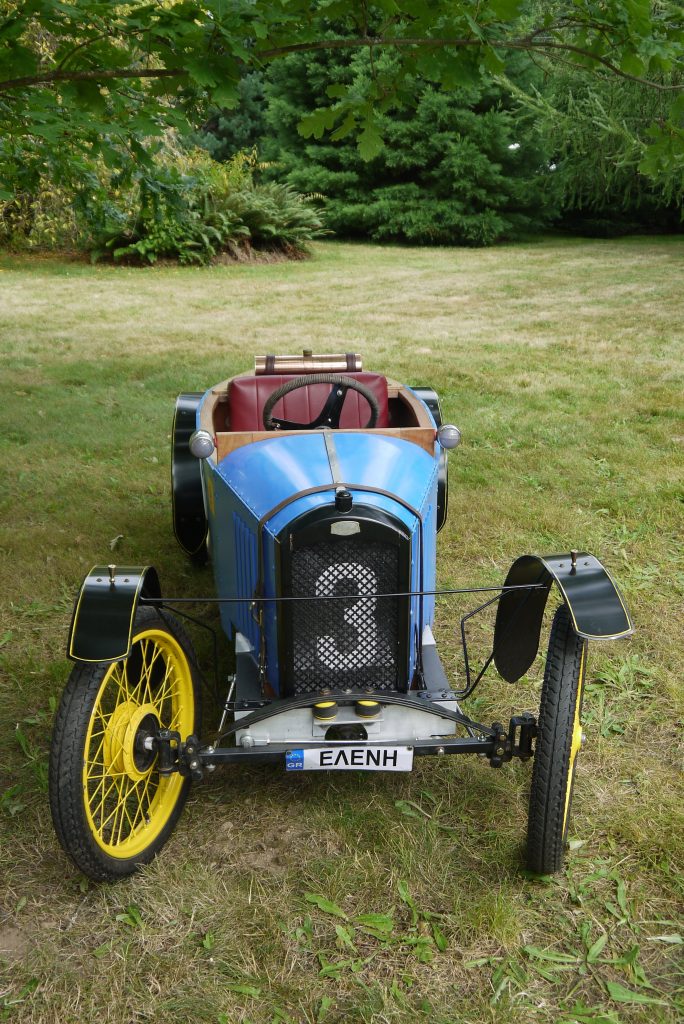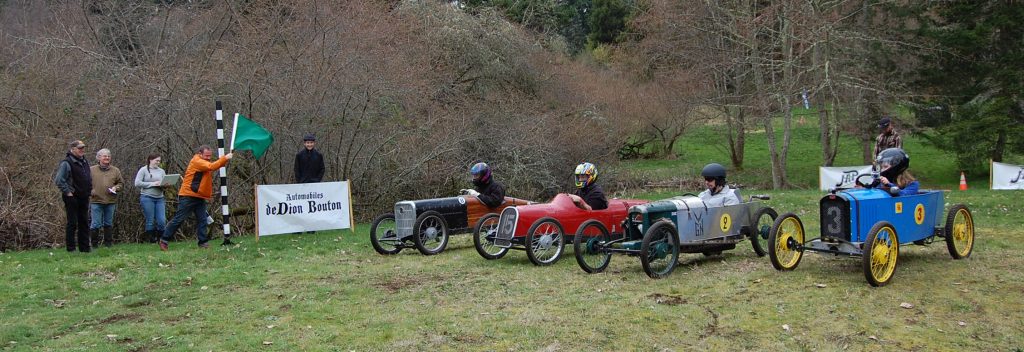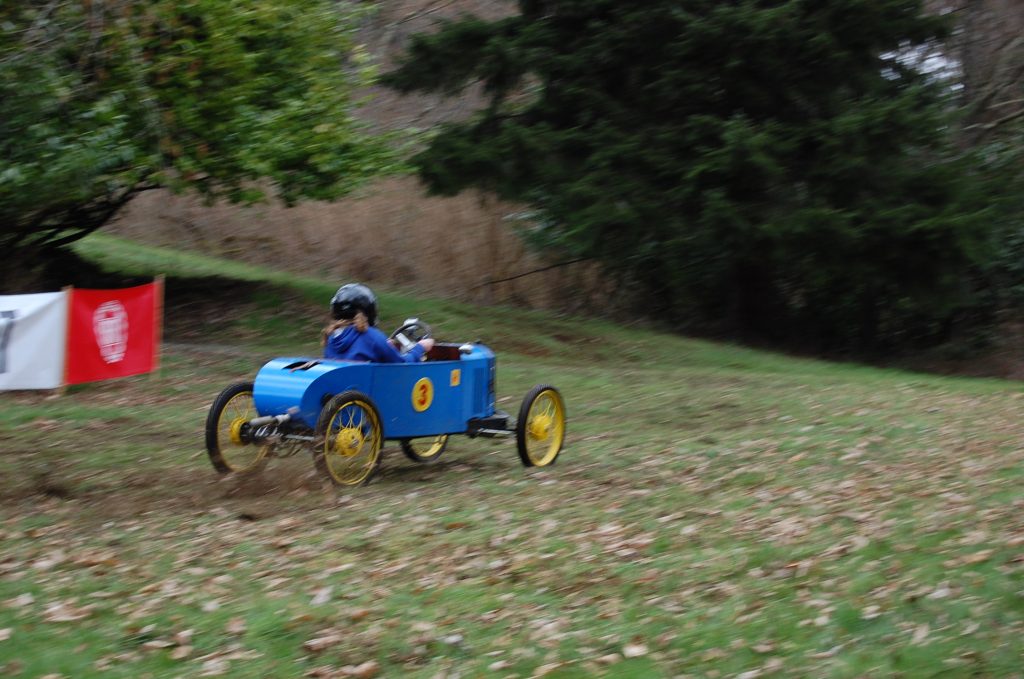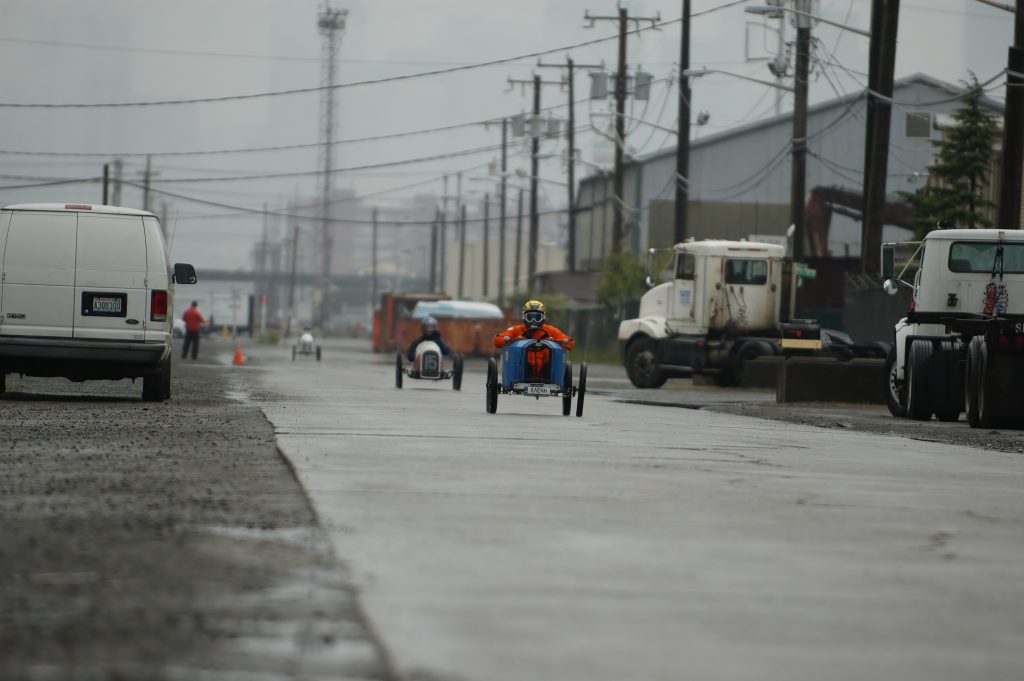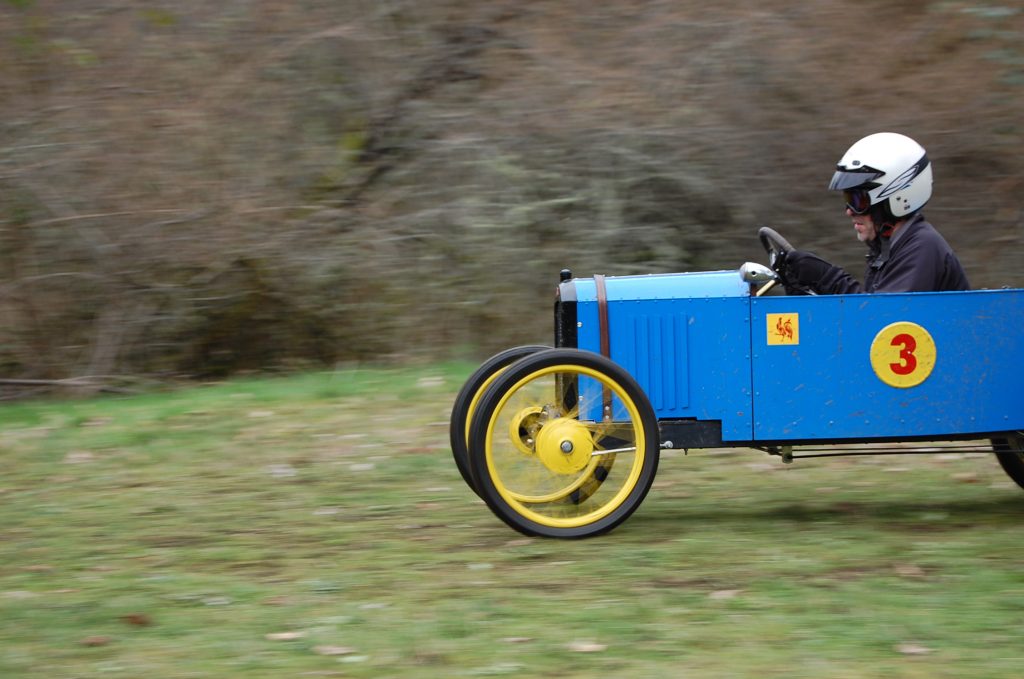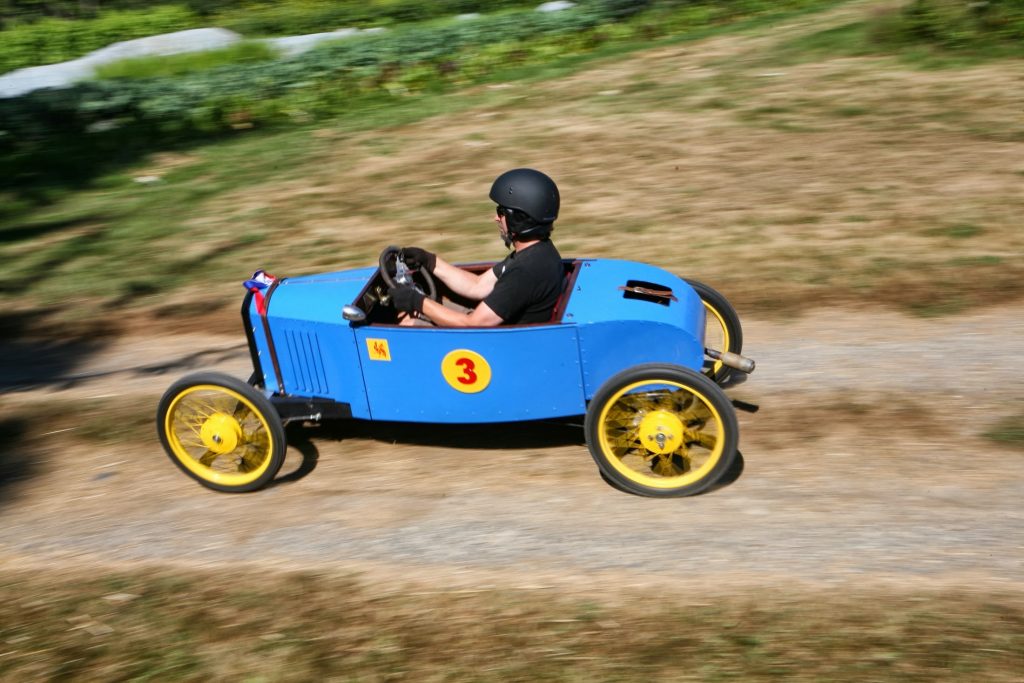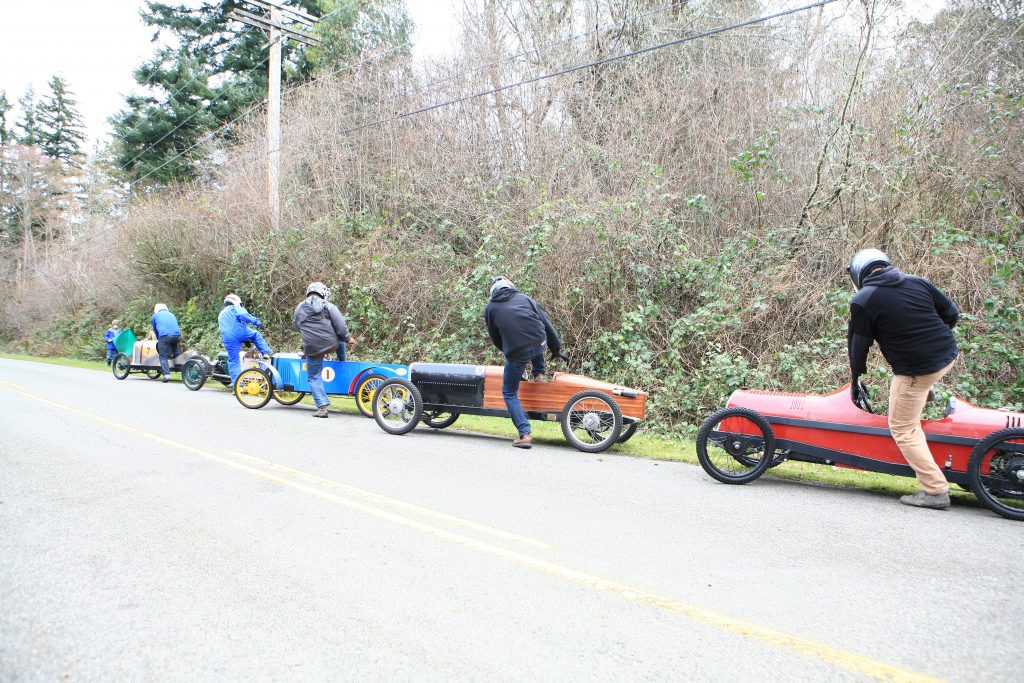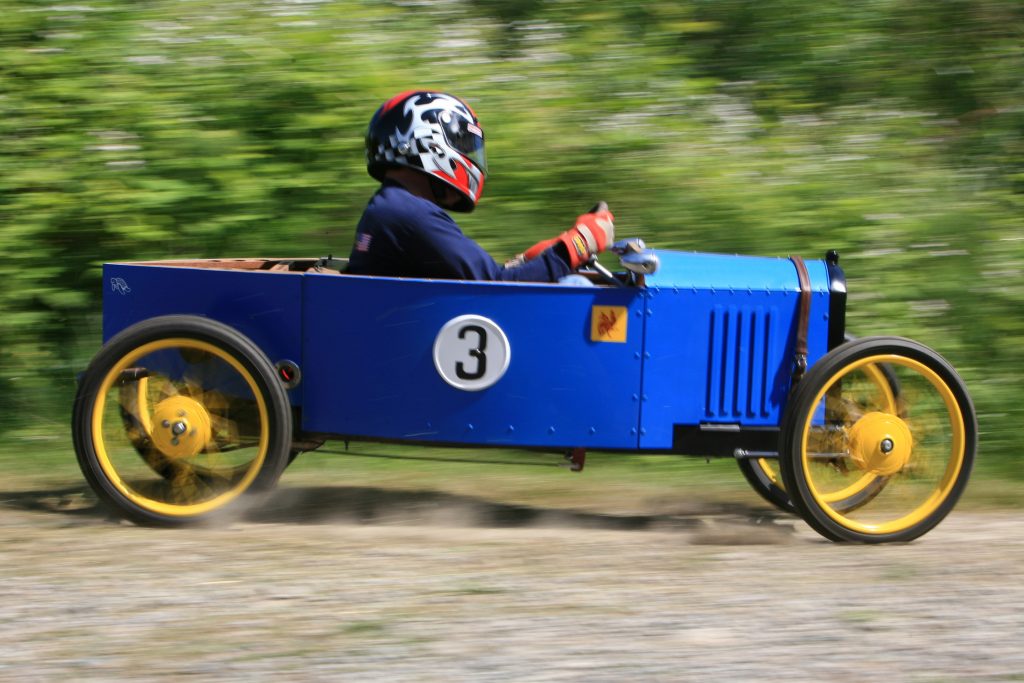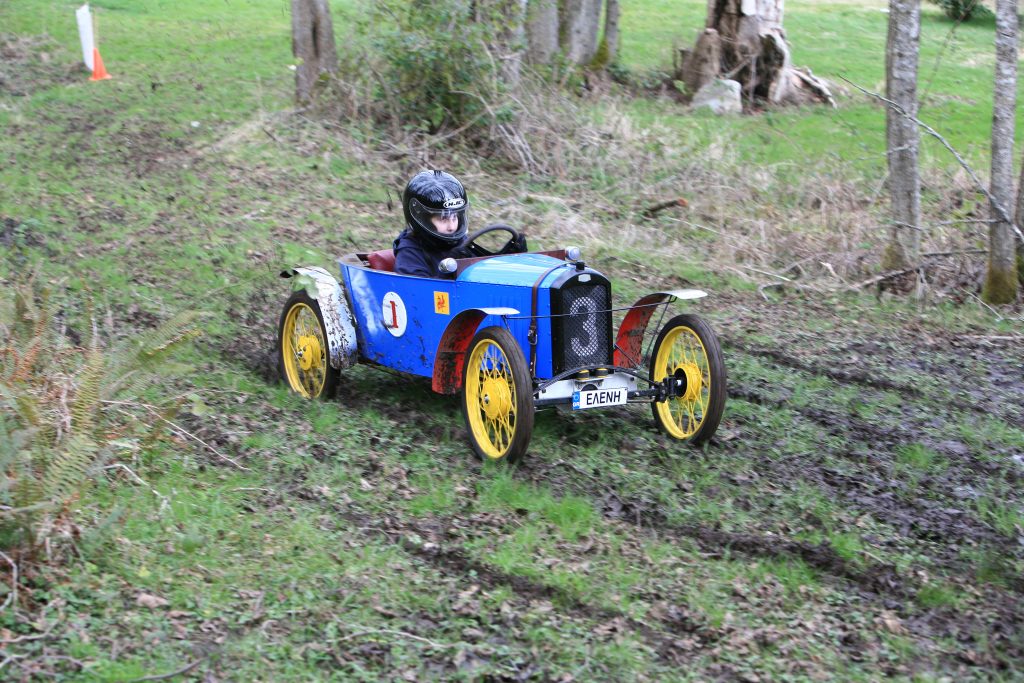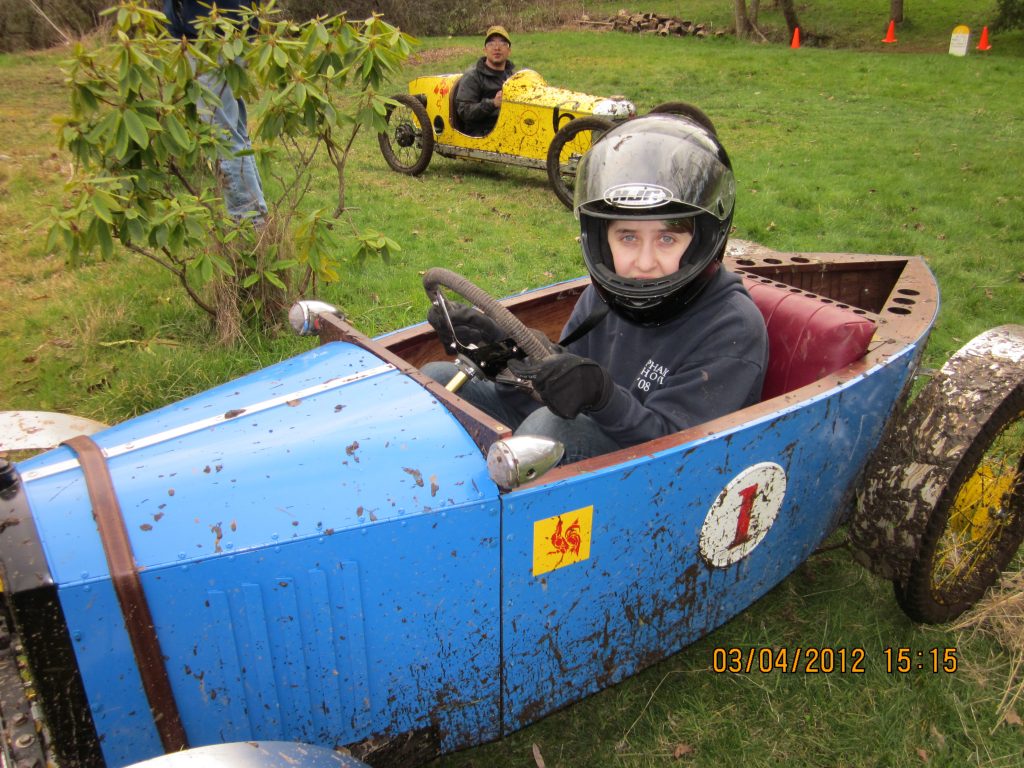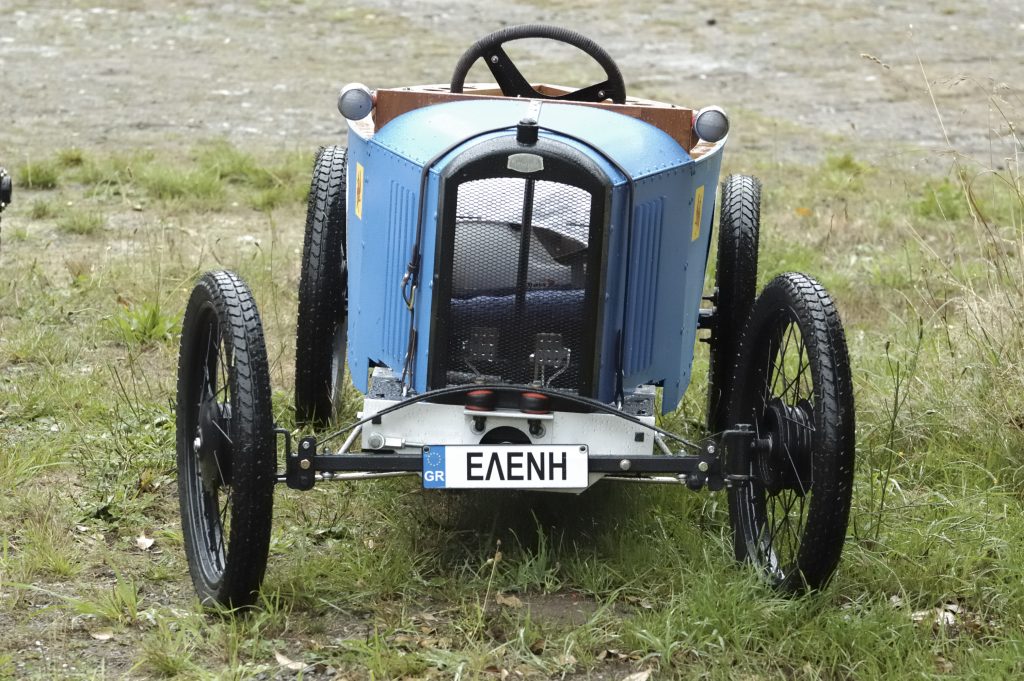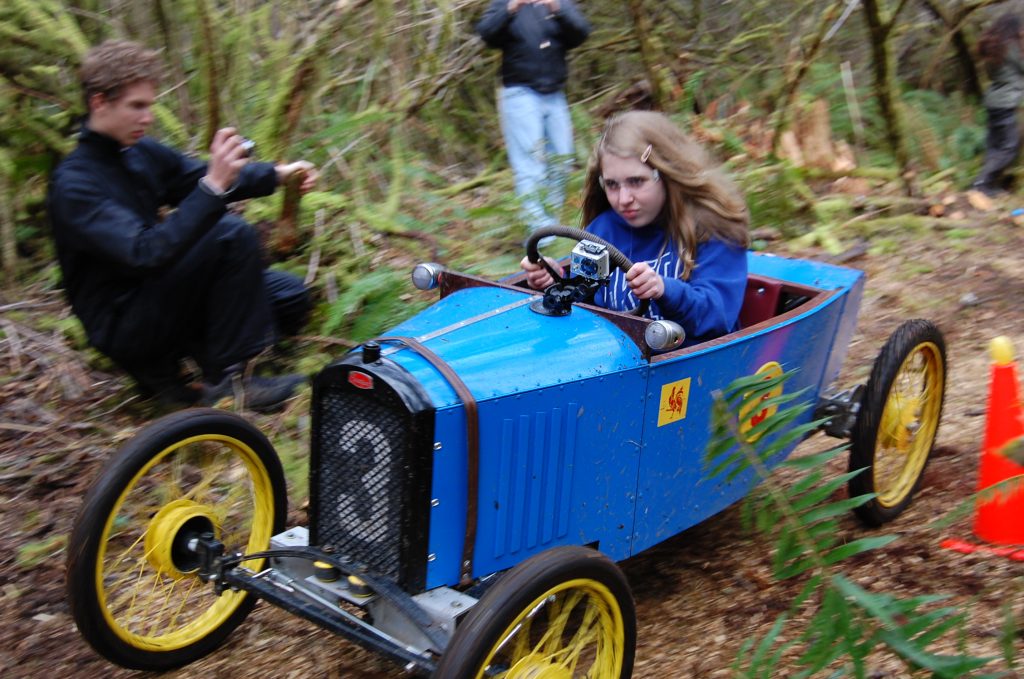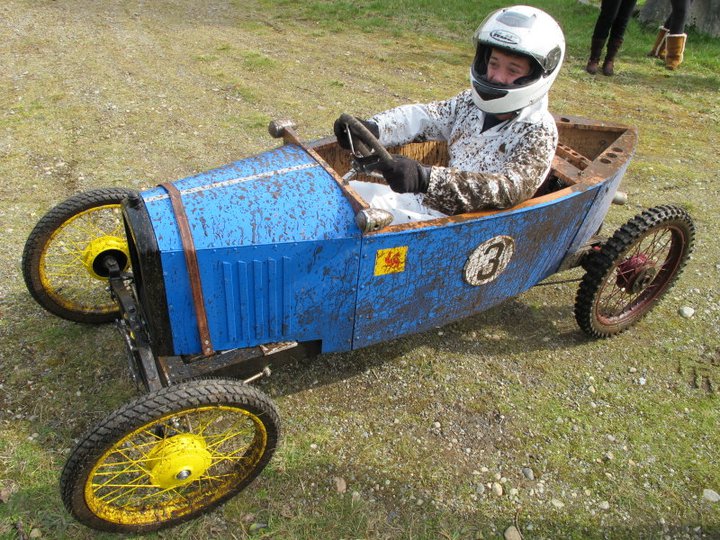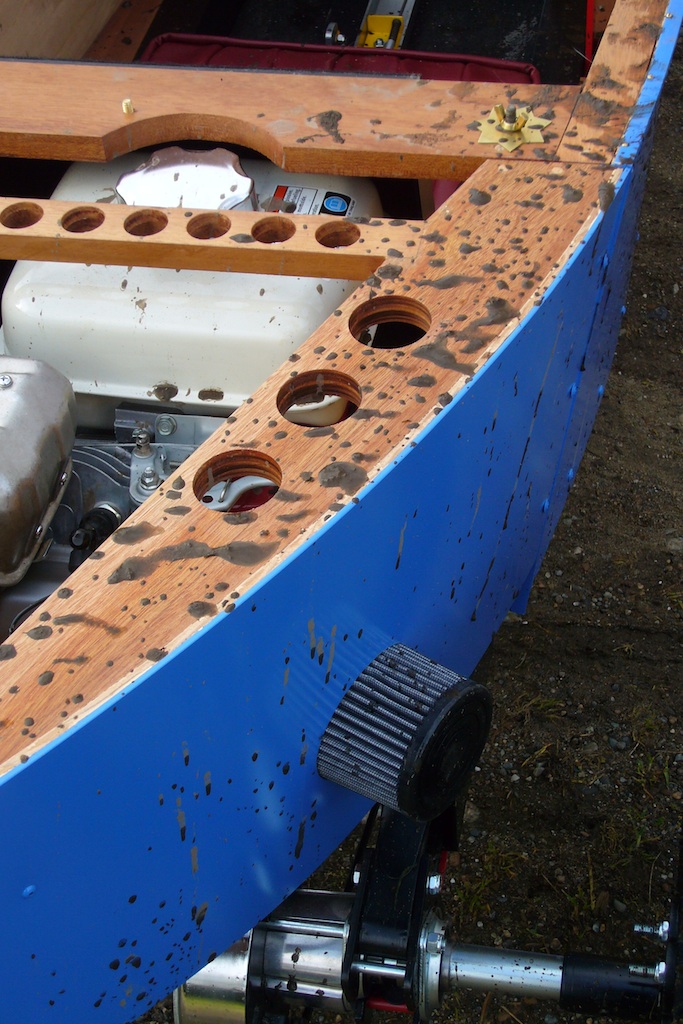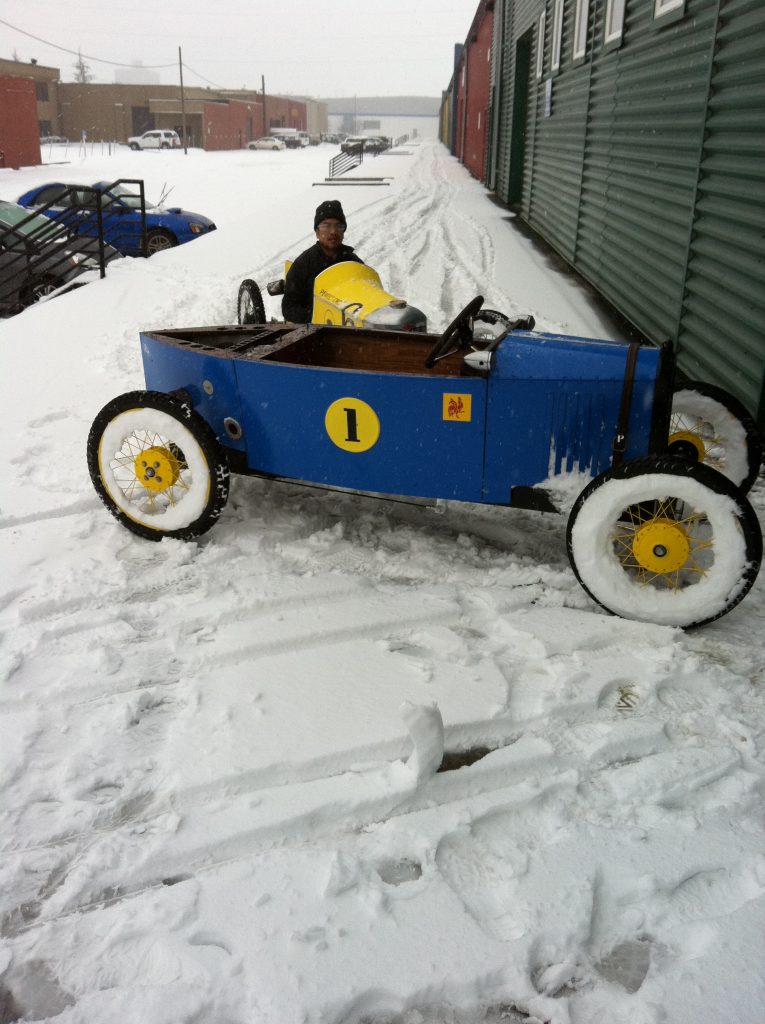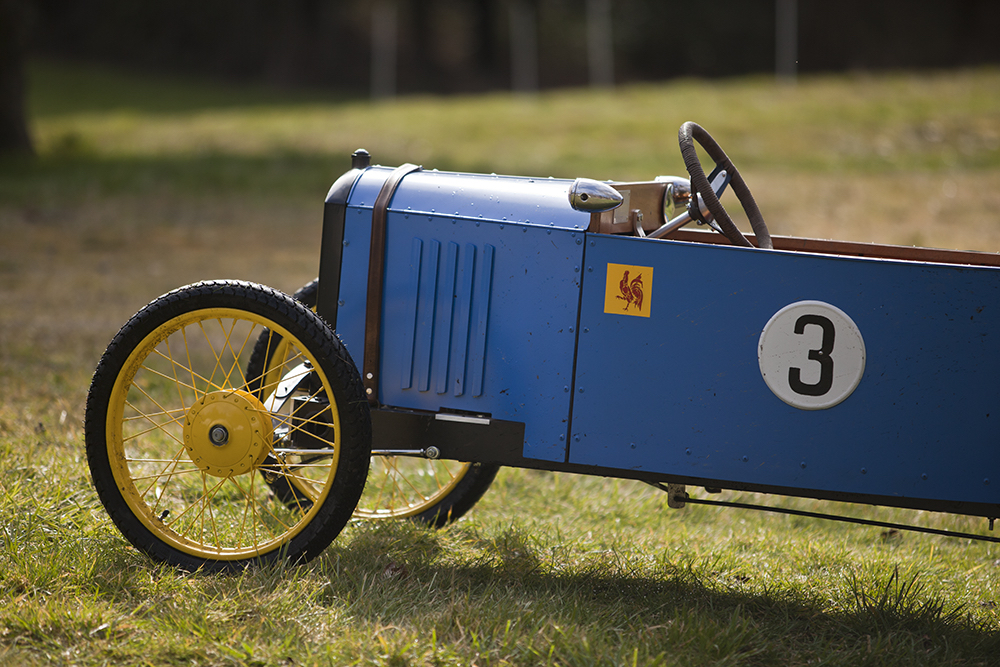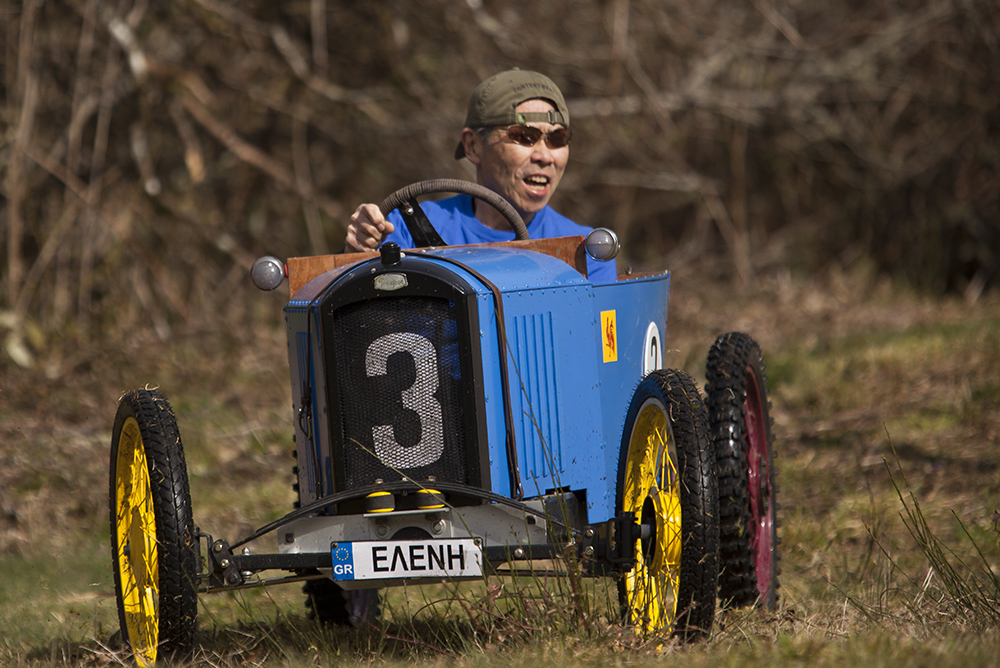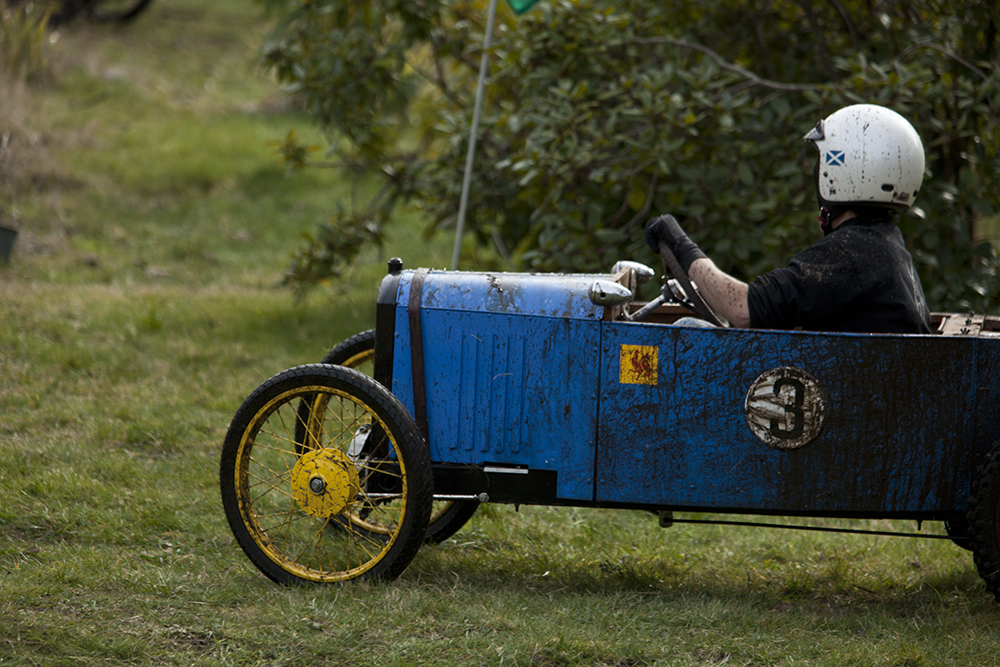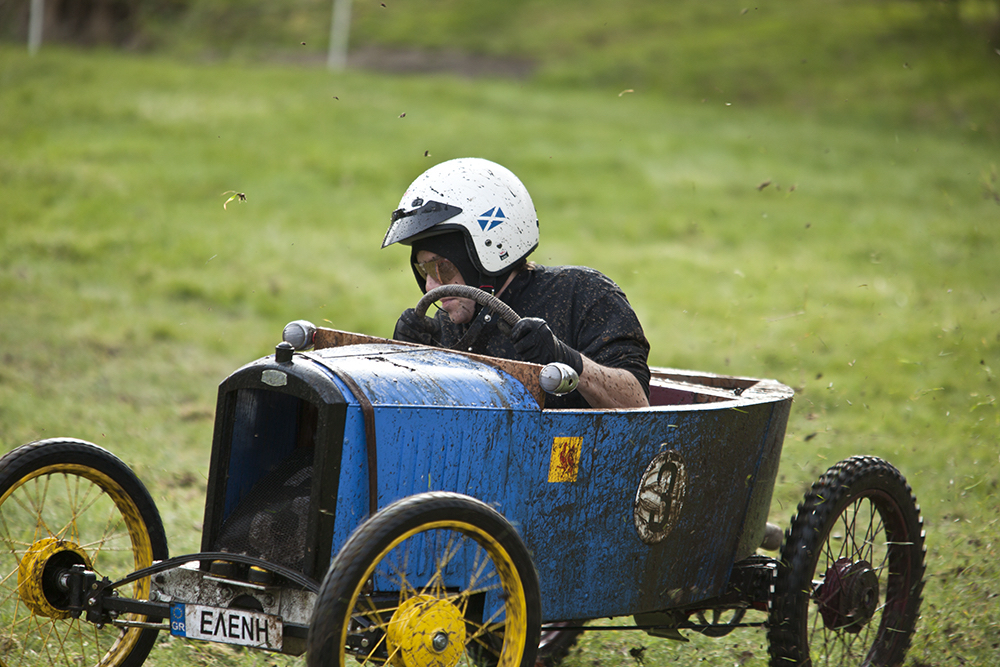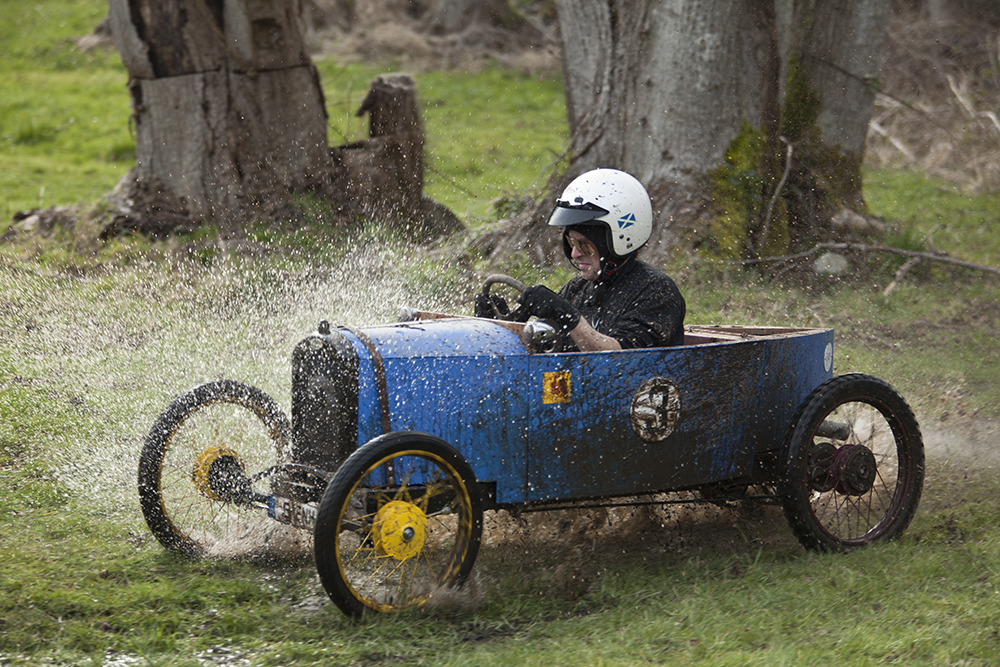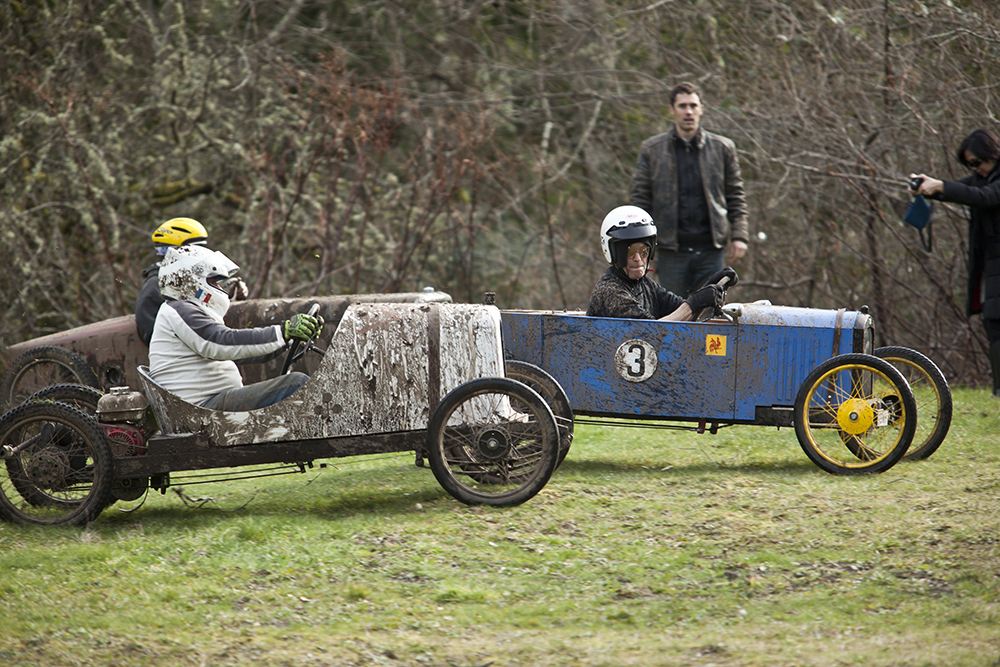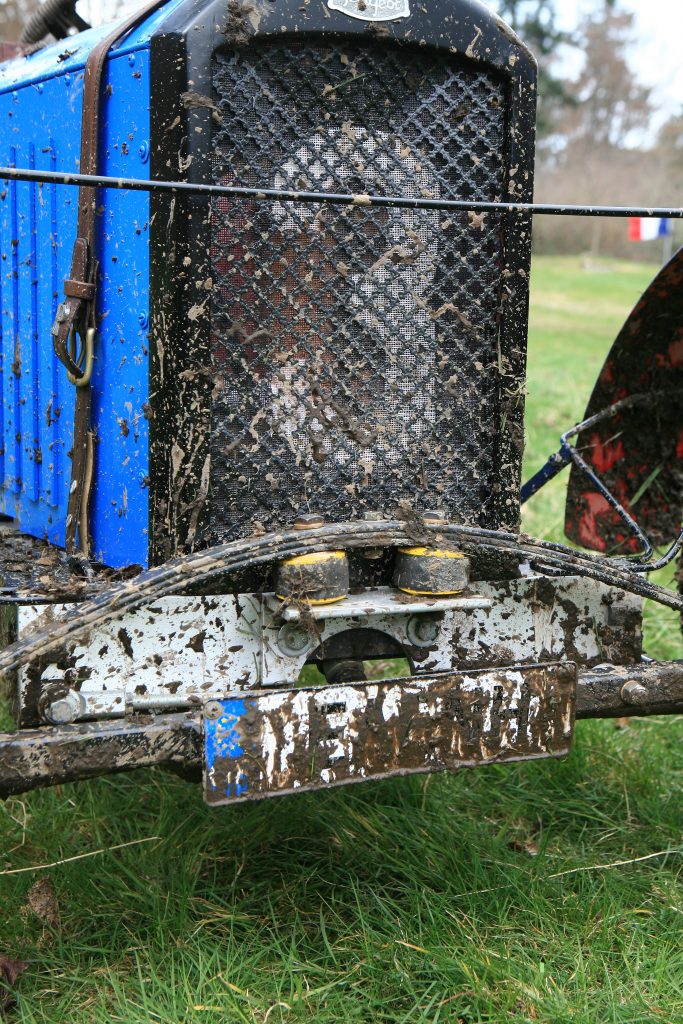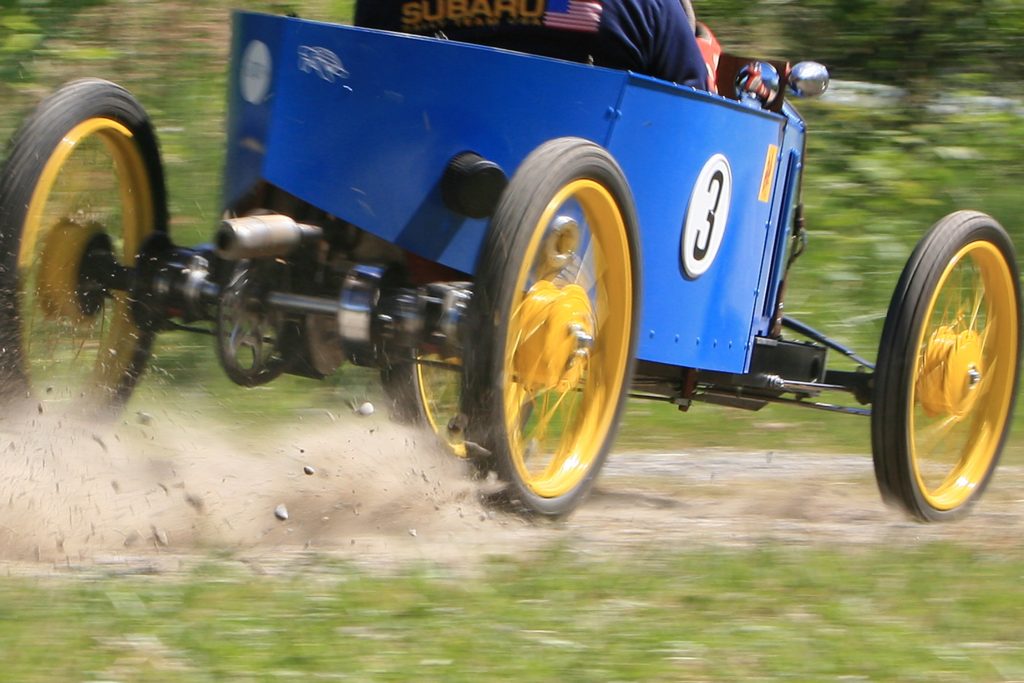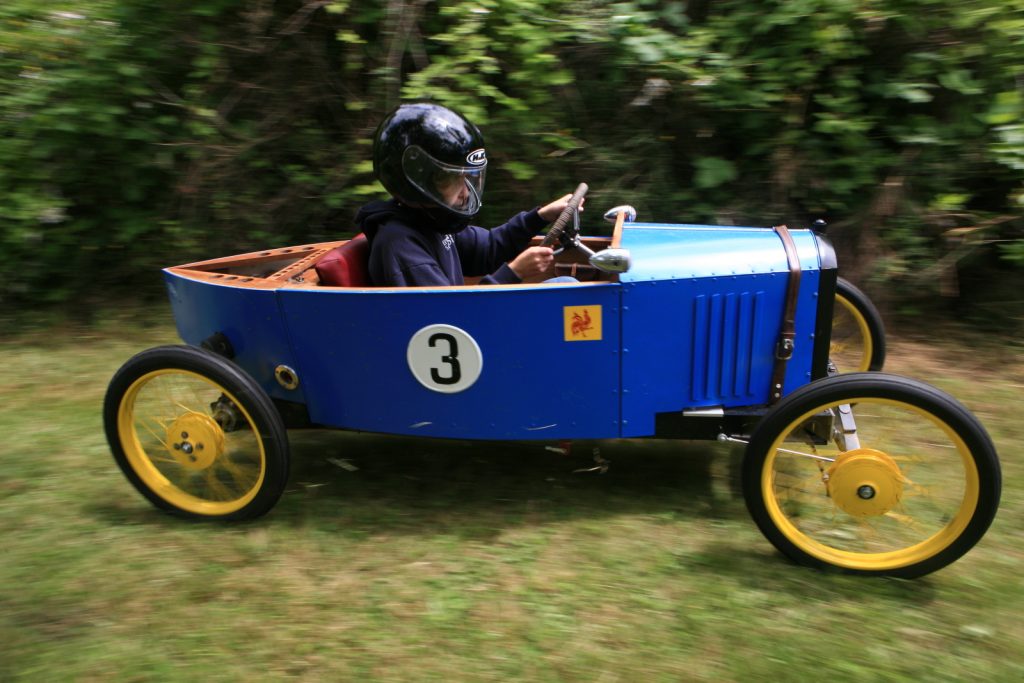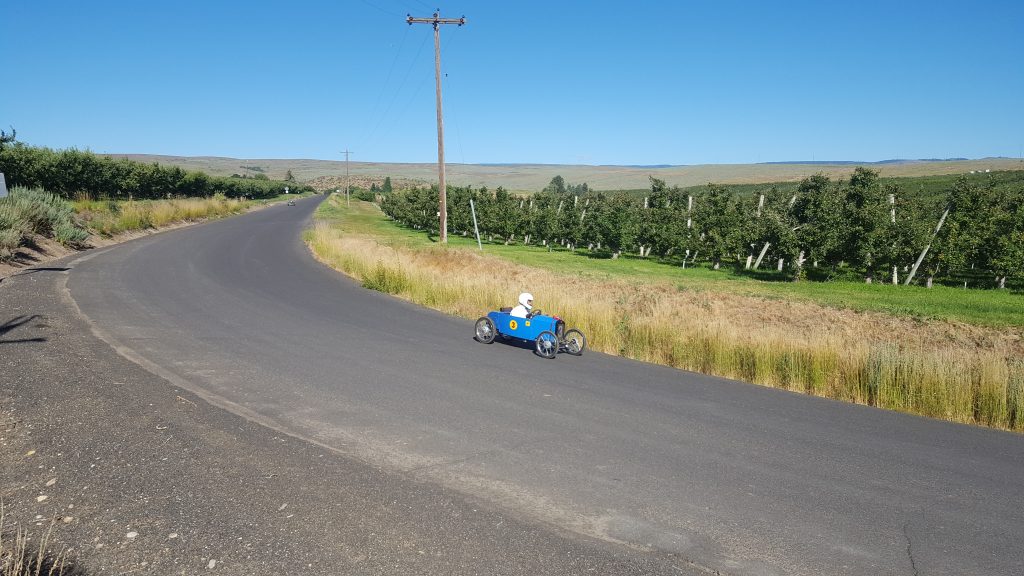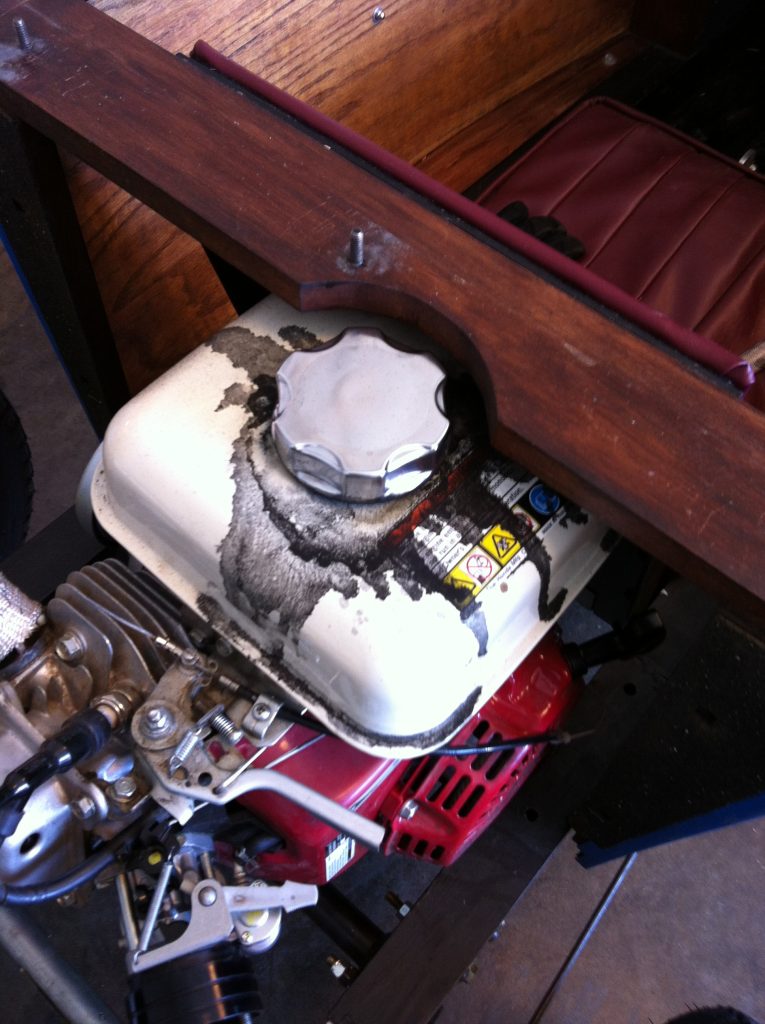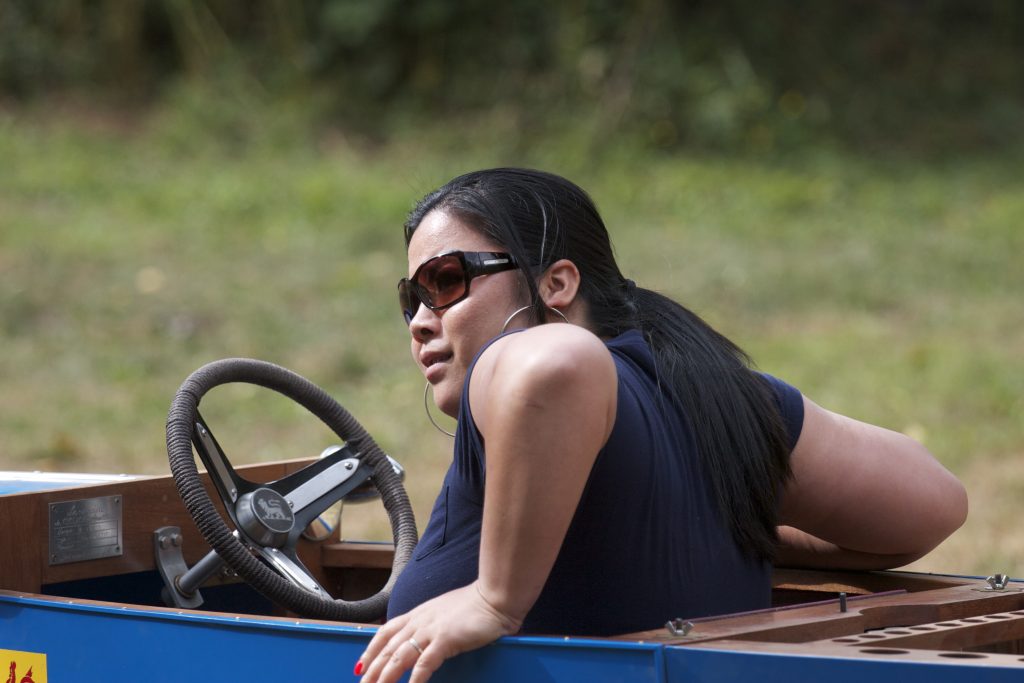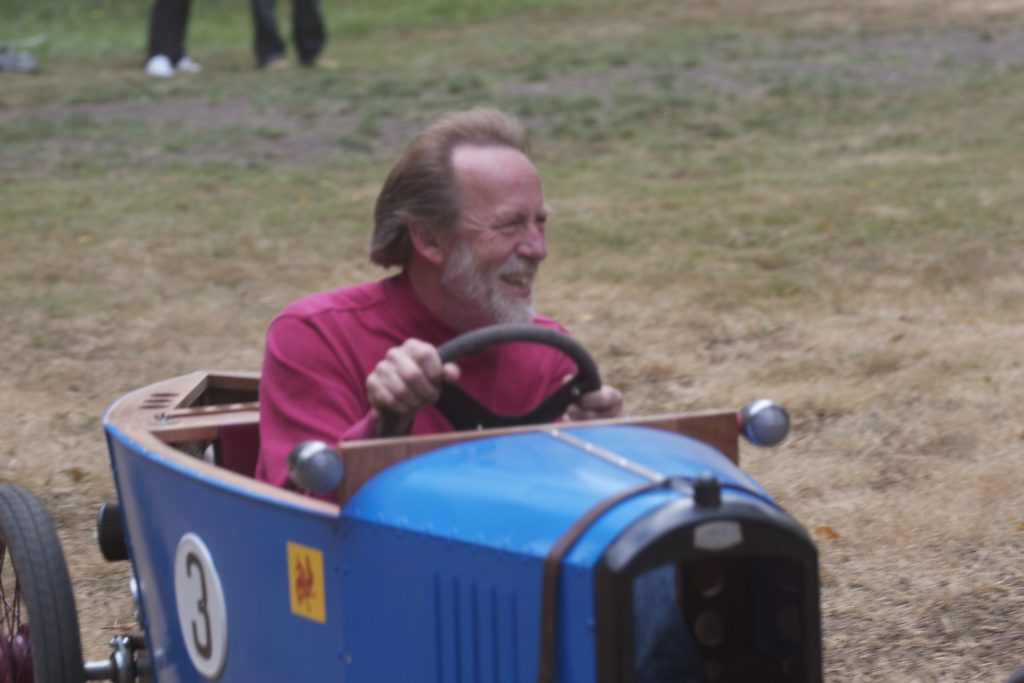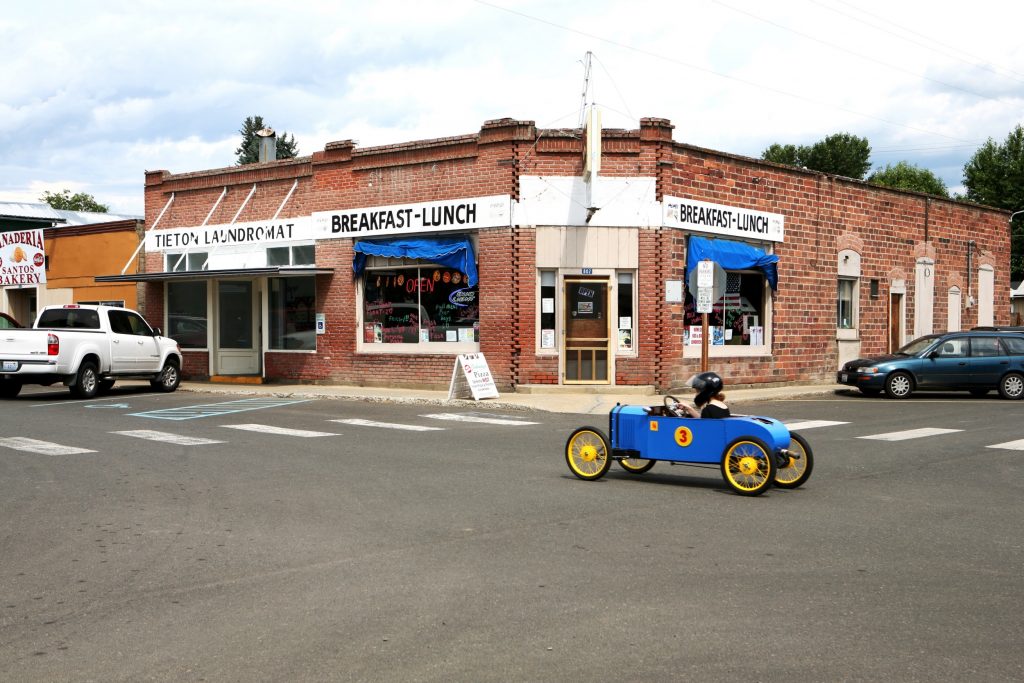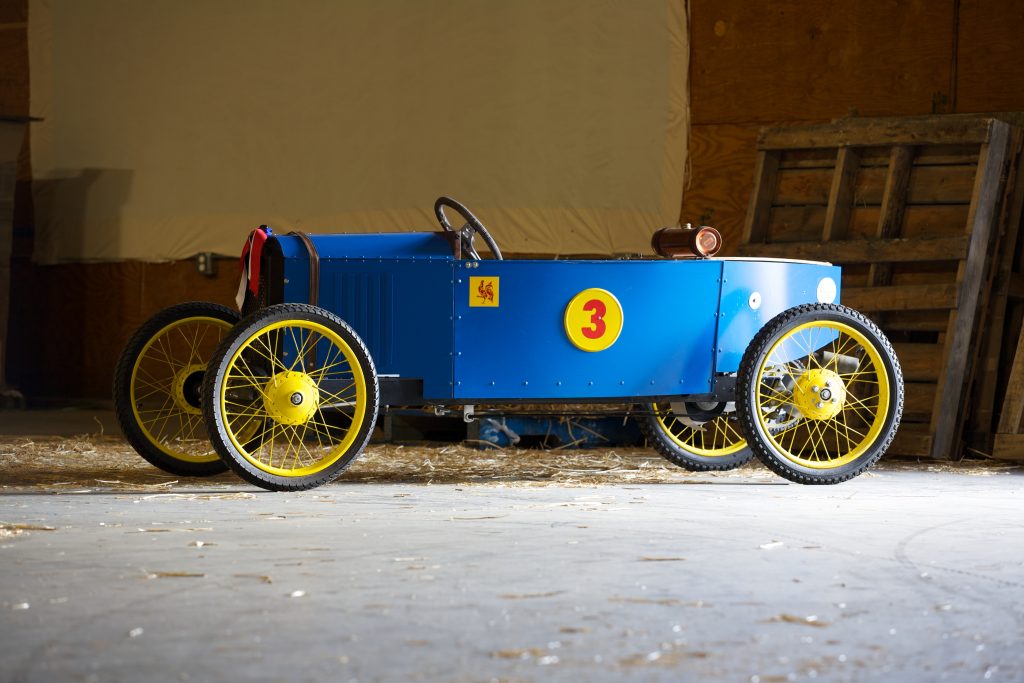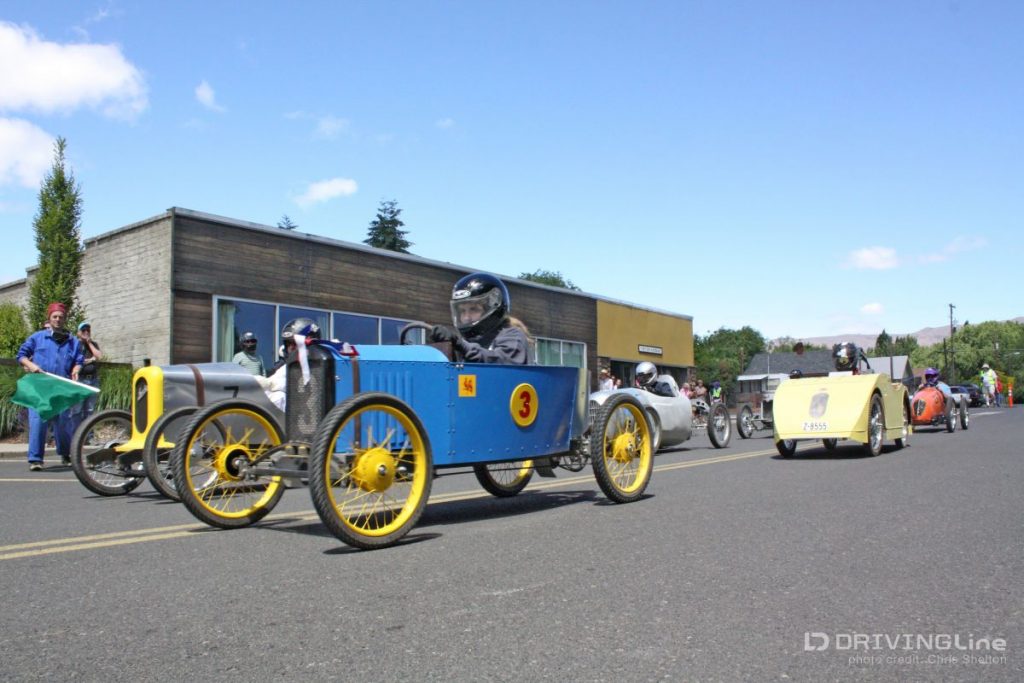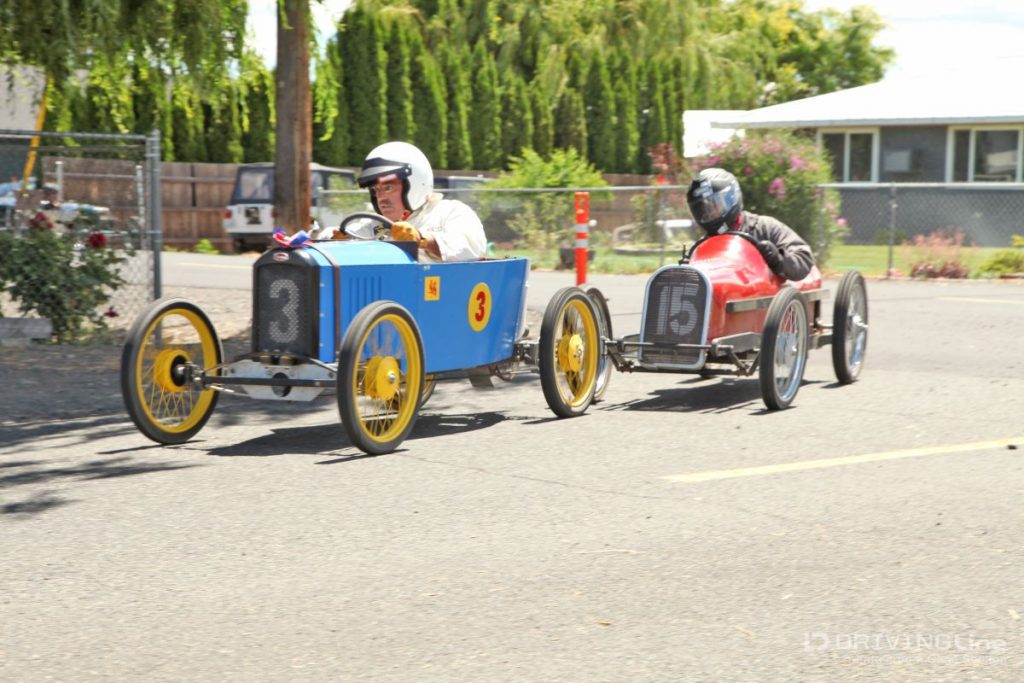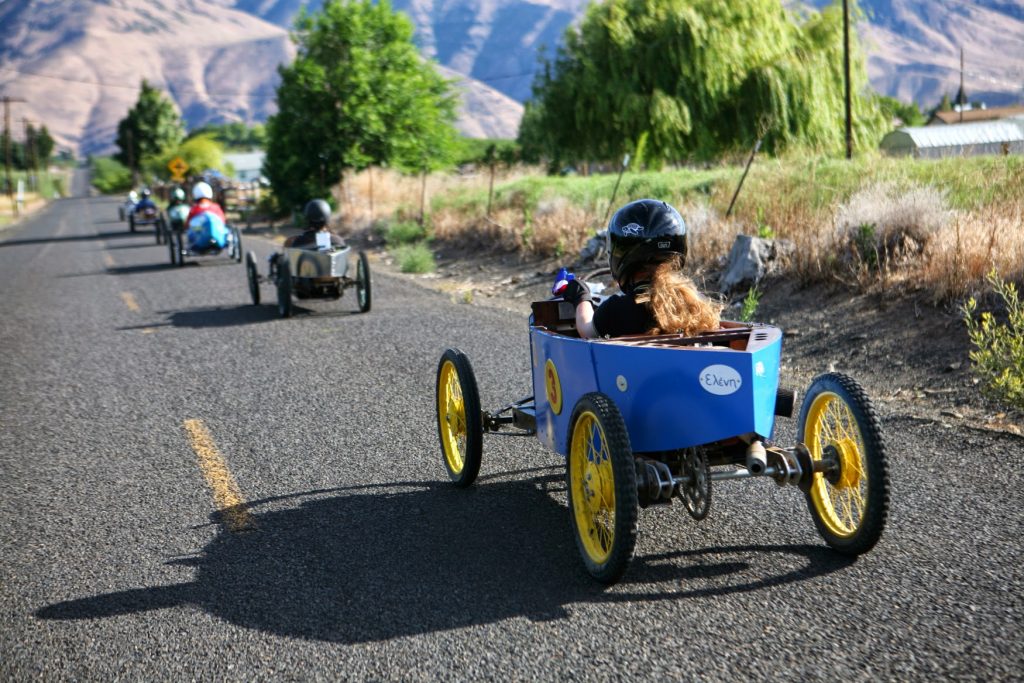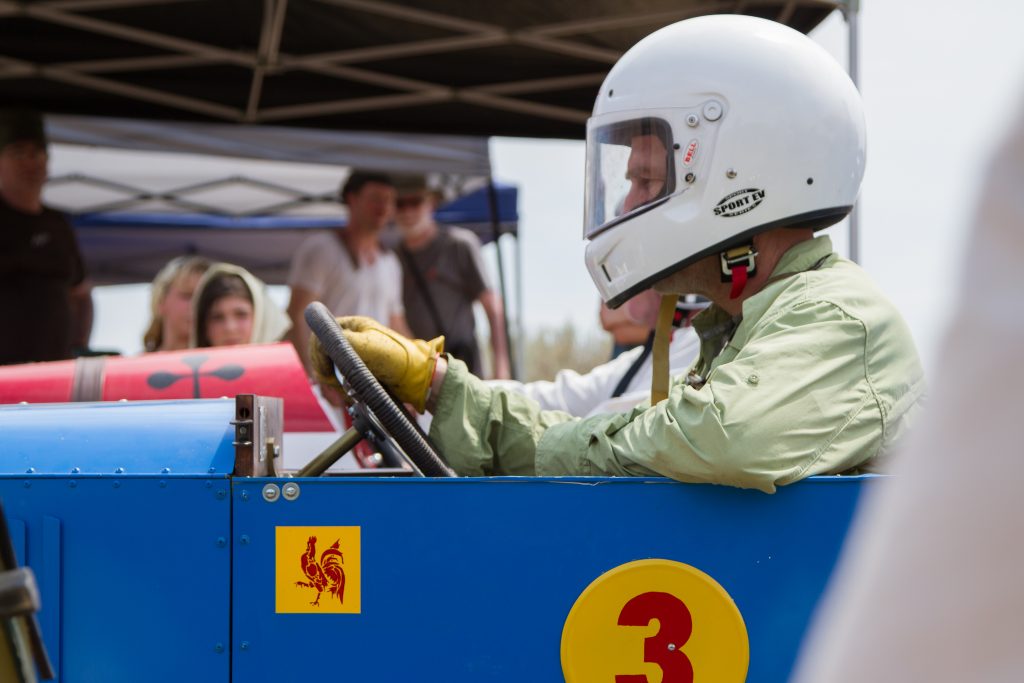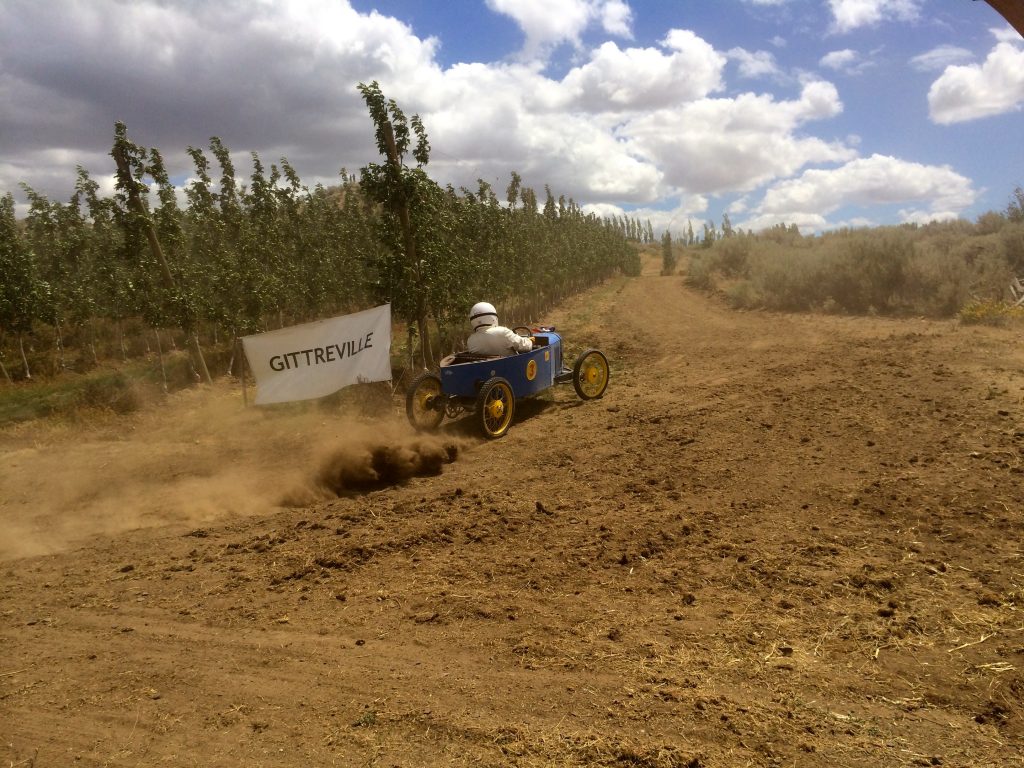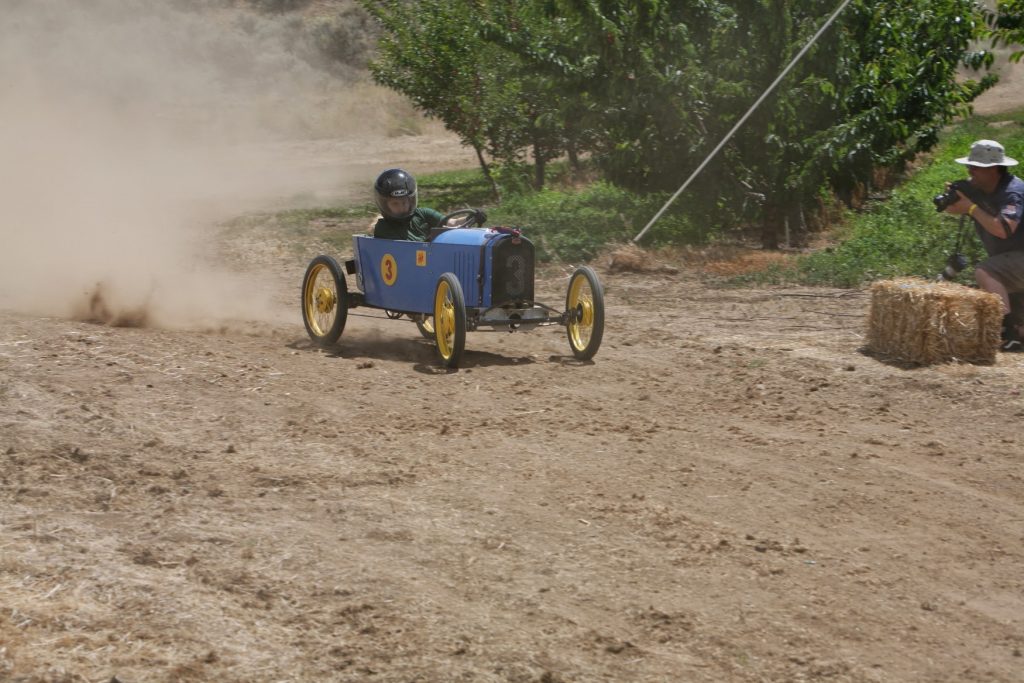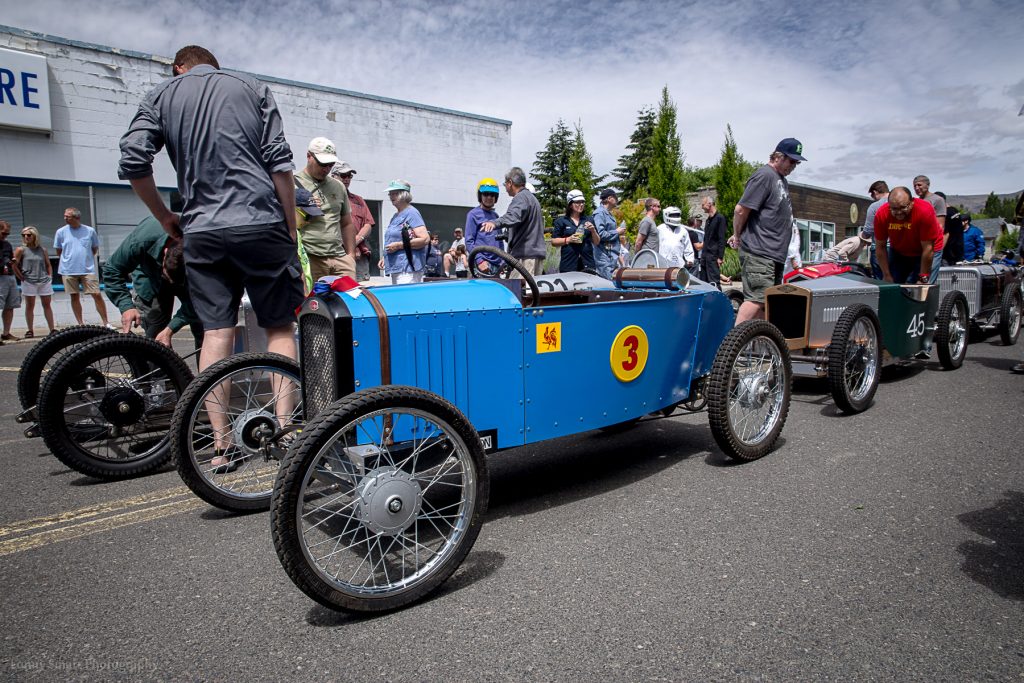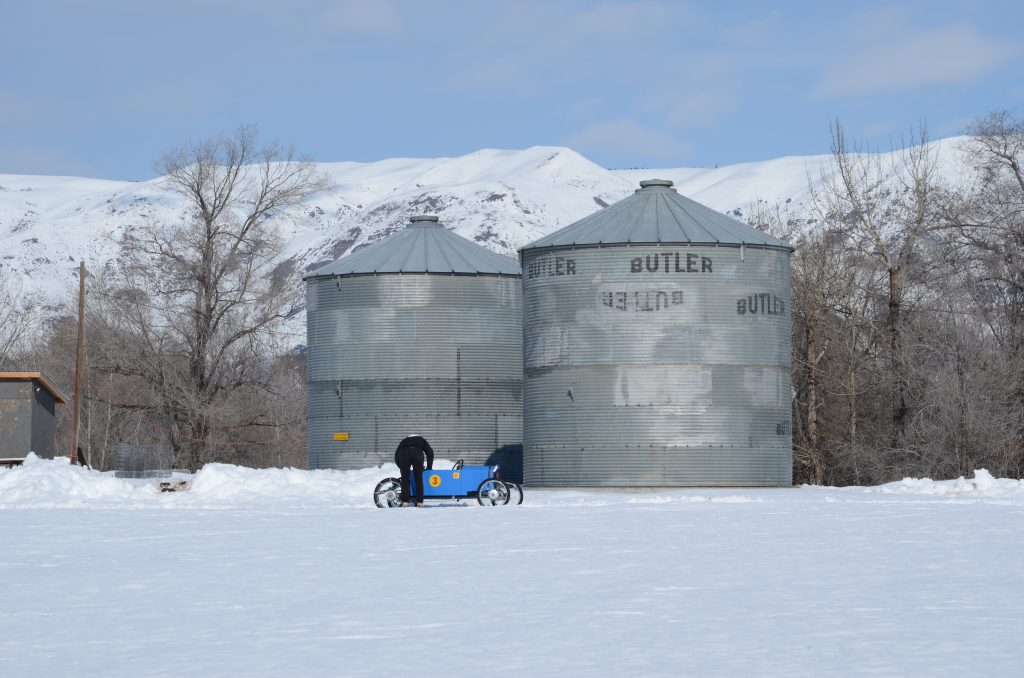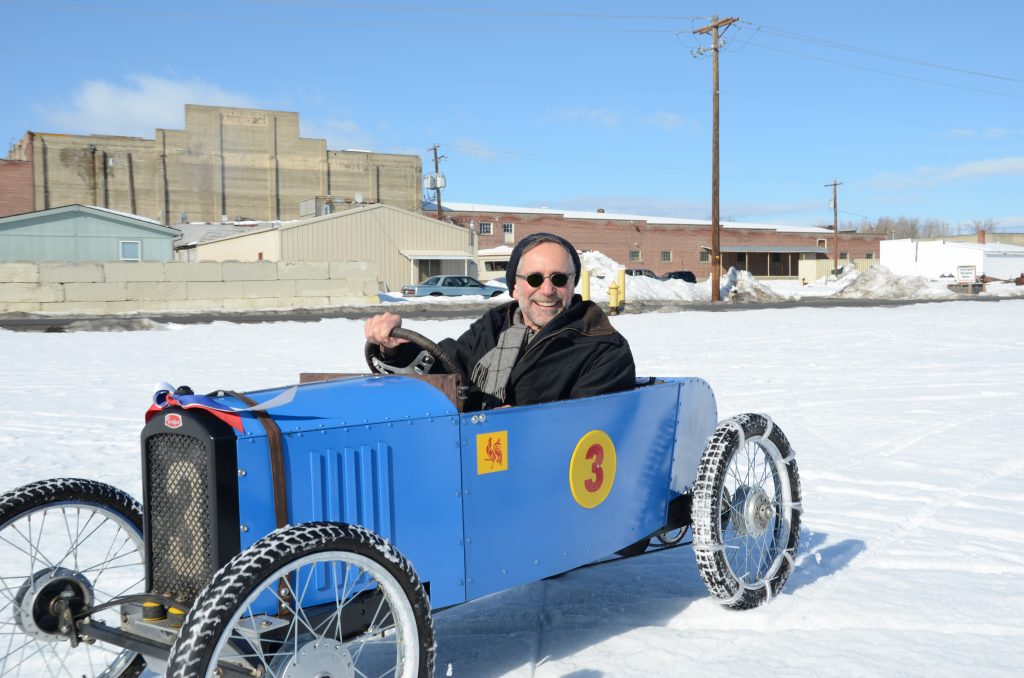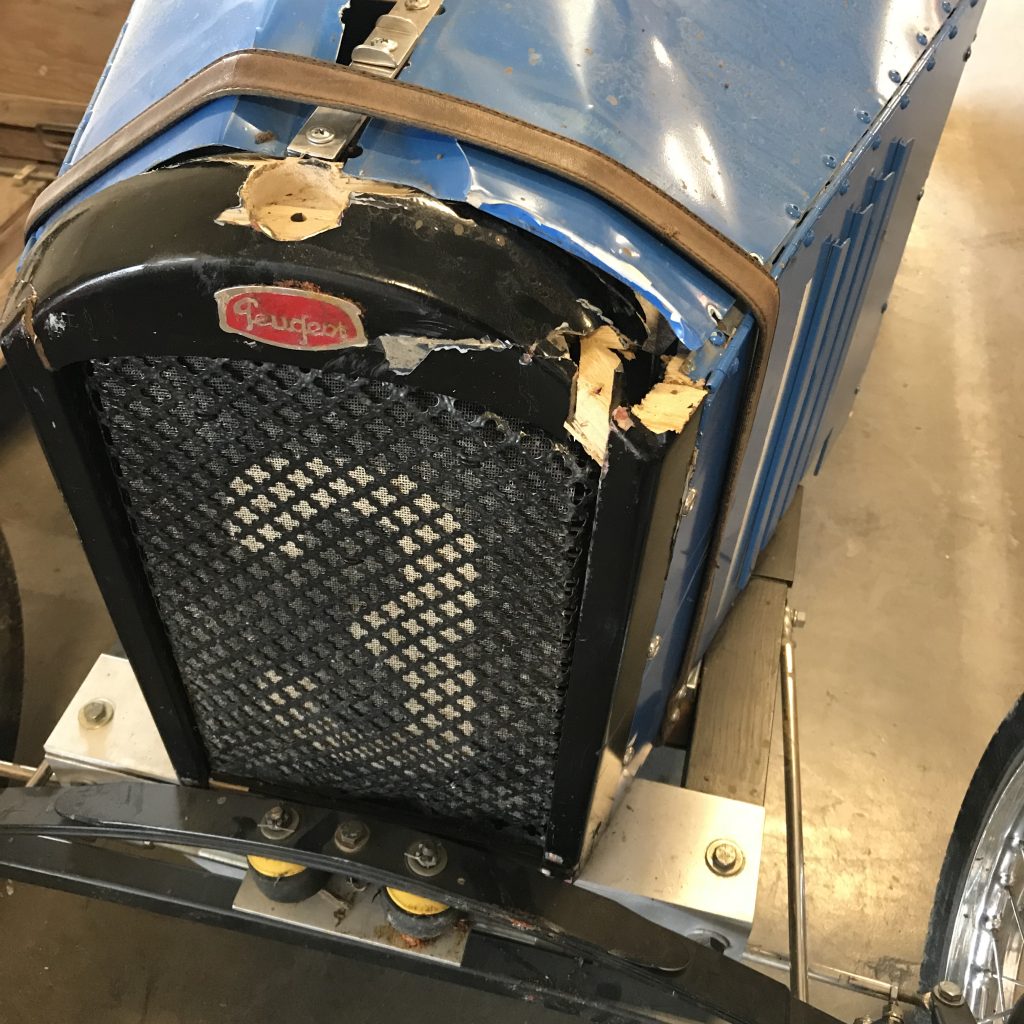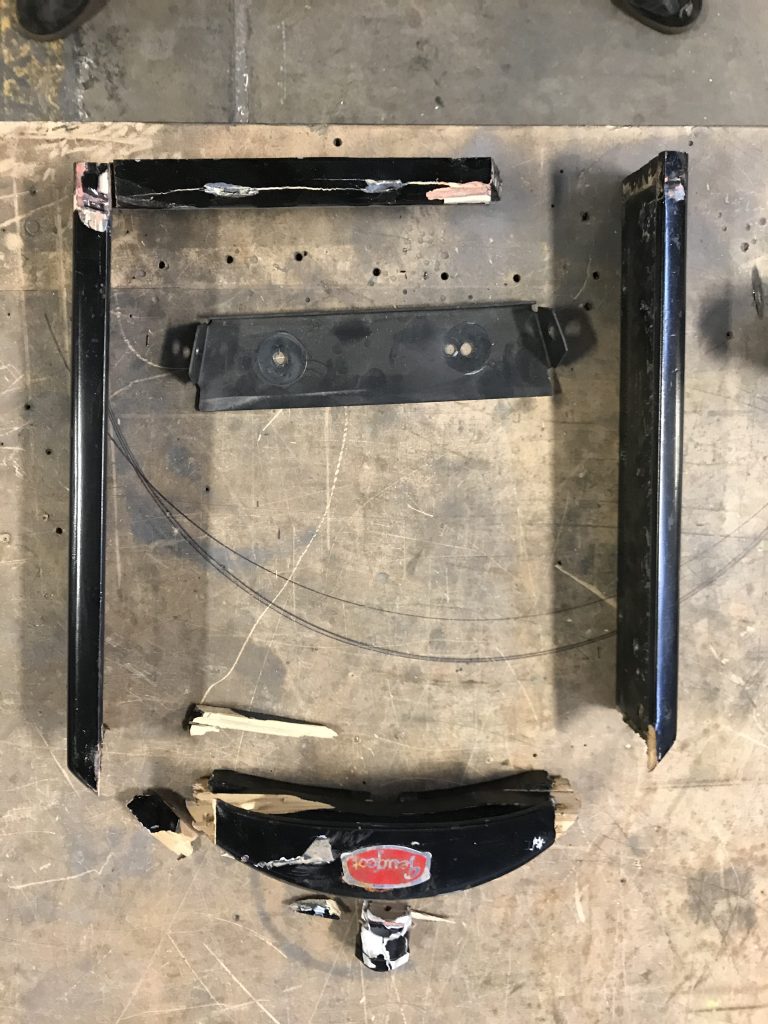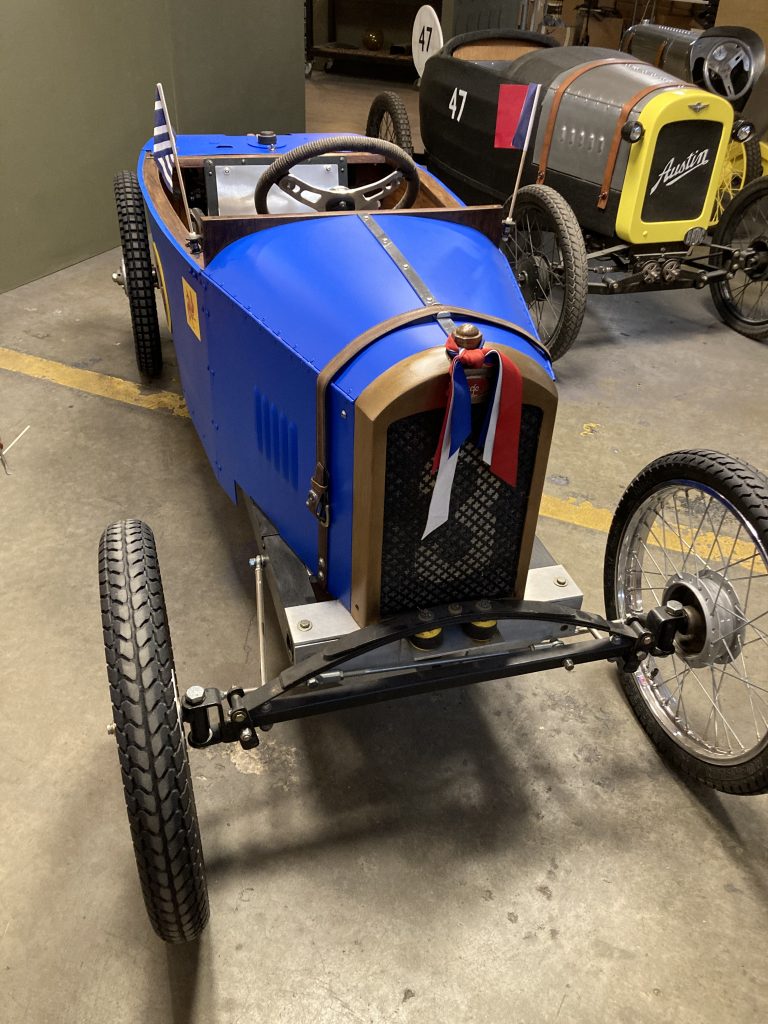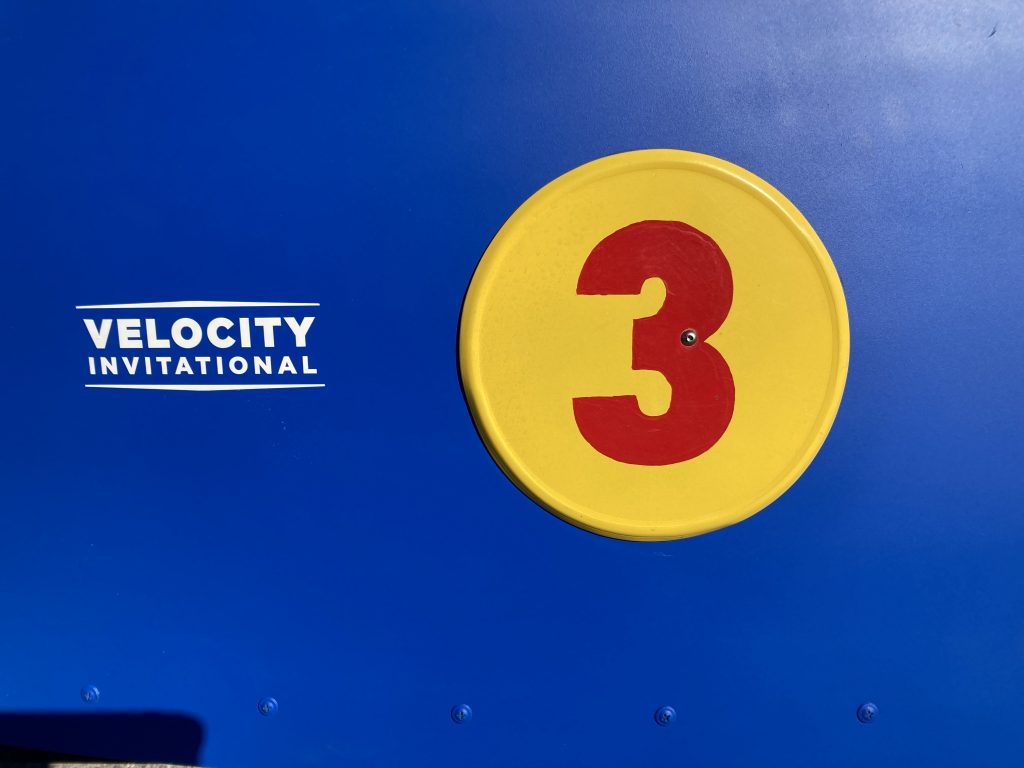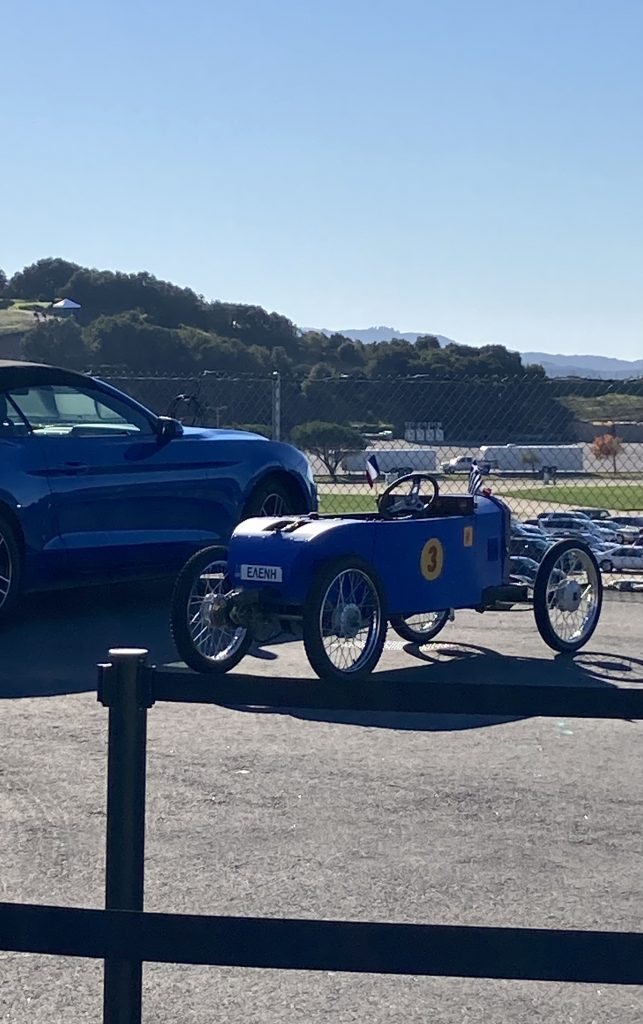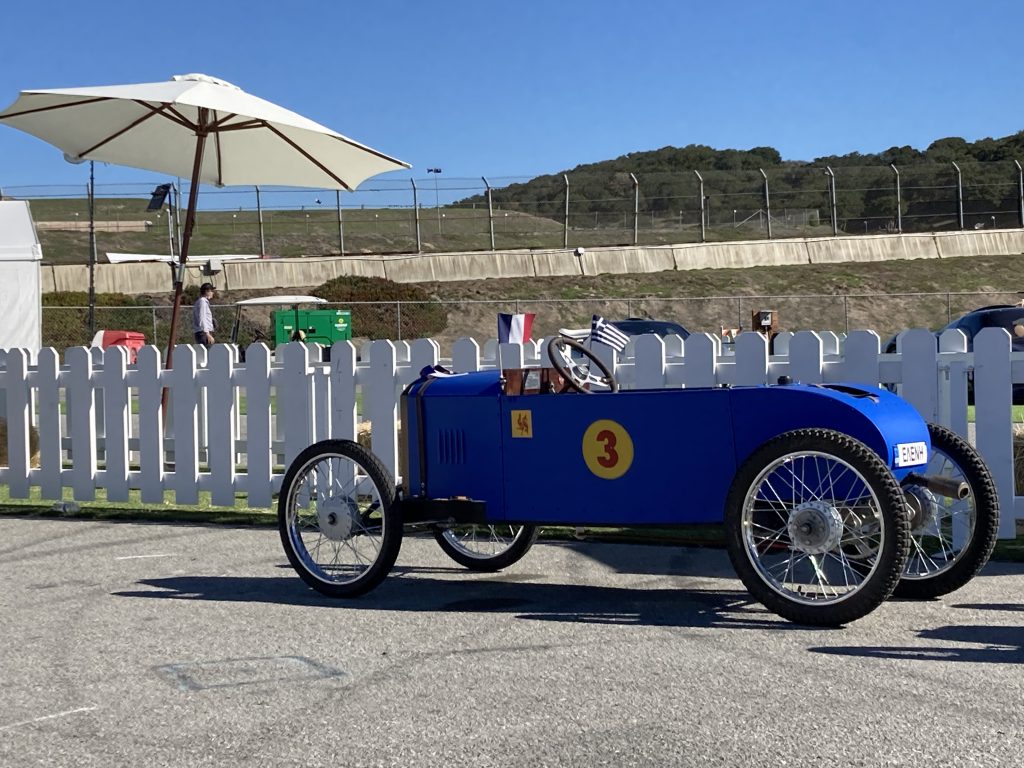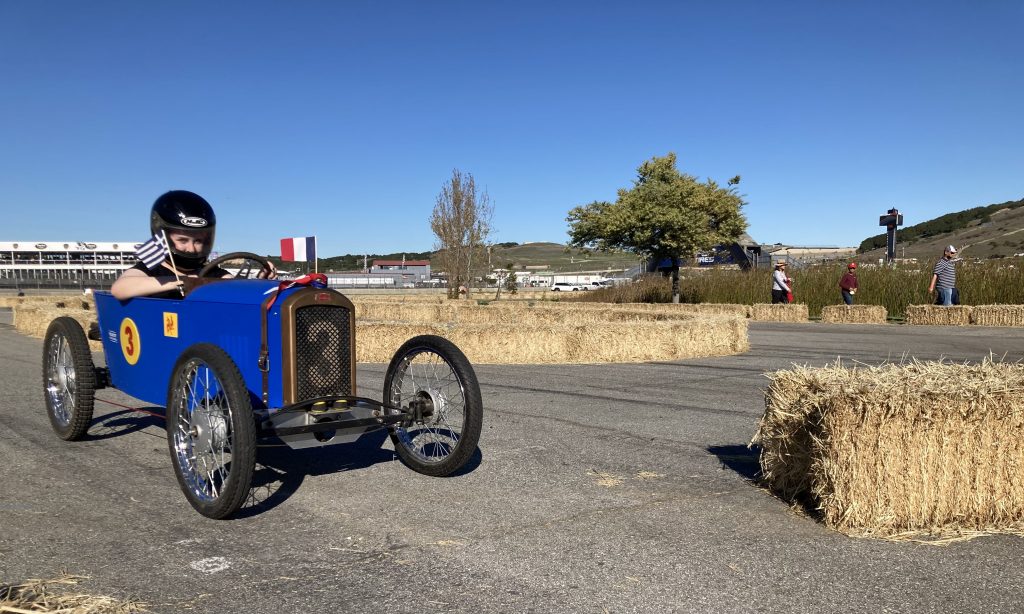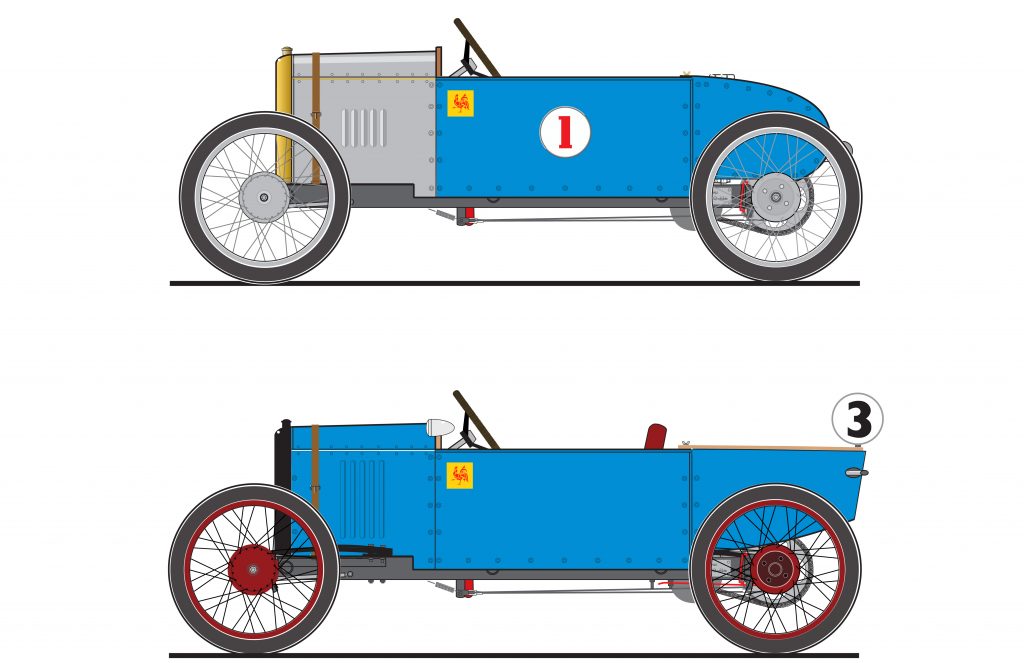
The Gittreville story begins with the Peugeot Quadrilette. Her build began in 2008 when the Bush recession left her builder with extra time on his hands. With initial inspiration from the Stevensons, the Mighty Peugeot, as she has become known, took a slightly different tack from the Stevensons with much of that driven by the brutal conditions on her future playground at Gittreville.
The Peugeot eschewed the plywood monocoque/foam/fiberglas Stevenson formula for an aluminum frame with removable bodywork. Unlike the Stevensons she was patterned not after a well known racer but rather an average early vintage car. She was built with a father teaching his (young) daughter to drive in mind. She was built to be fun for kids and testosterone addled middle aged men.
From the beginning the Peugeot was meant, above all, to be versatile. She is. Surely, more so than any Cyclekart that has followed. She is capable of crawling over logs, slogging through mud, fording streams, pounding over rough summer hardened grass fields, nimbly picking through obstacle courses and dominating on-road racing.
The objective of versatility drove the selection of the Peugeot Quadrilette as inspiration car. Correctly proportioned to the original allowed a mid-engine and superb weight balance. The cockpit is big enough for two kids (or a father and daughter). Side bolsters are fitted for more spirited solo driving. Although it took some time to work out, the front suspension pursued being super soft which is the key to the cars handling characteristics. She never ran with the Stevenson’s one wheel drive – impossible at Gittreville! The combination of soft front, no flex frame and short wheel base enable easy control of the inside rear wheel. Lift to turn. There is a fashion in “modern” cyclekarts to be horrified of light under the wheels and a mania for drifting turns. The young daughter learned to drive with at least one wheel in the air most of the time. Her dad thought that was perfectly reasonable… The Peugeot will not slide. She carves. Like a scalpel.
1922 PEUGEOT “QUADRILETTE” (TYPE 161)
The Peugeot “Quadrilette” was humble, small car.
The Quadrillette evolved out of the Bebe Peugeot designed by Ettore Bugatti before the First World War and served as inspiration for the later, hugely successful, Austin 7.

TECHNICAL DETAILS
Chassis No.: 801
Engine: Honda GX 200 with, more or less, moderate “Stage 1” ~ “Stage 2” modifications. Engine modifications happened gradually. Initially, low end torque was pursued (think logs, mud, and claustrophobic courses). As our courses improved/opened up, emphasis shifted a bit to more revs. In her prime, the Peugeot easily ran away from the field at Tieton editions of the Gordon Bennett.
For years The Peugeot was Gittreville’s ambassador car performing guest drive duties to entice people into our insanity. Almost anybody can fit. The steering wheel doesn’t need to come off. Easy driving without bad manners. She is an old lady now, driven hard, literally by hundreds of people. Now semi-retired, she is optimized for classic Gittreville events like La Tour-Du-Pin. Engine performance has been dialed back a bit. The Peugeot has never had an aggressive cam, special crank, non-stock flywheel, etc.. Modifications focussed on polishing the ports and getting carburetor/exhaust balance right. Medium valve springs. Everything in moderation!
Drive: Comet TAV-2. #41 chain. 60 tooth driven sprocket on live rear axle. A 7” driven went on years before it was generally realized that was an option. Shhh.
Brakes: Initially a 6” Ø drum brake, controlled by pull rod to hand lever and 6” disc brake, controlled by push rod to foot pedal. Both brakes on the same axle. Either stopped the car equally well. Not so common for cyclekarts, the car always had two brakes (one for dad to grab if the foot pedal got missed). The current configuration is two 6” disk brakes. Both are mechanical. Simple and foolproof.
Wheels: Initially 17” x 120 front and 140 rear. Tires: Initially 2.25 vintage Bridgestone street scooter tires front, 2.50 Michelin Gazelles rear. Over twelve years of hard life, many wheels have “worn out”. The current set is 140 front and rear. Equally, many tires have gone bald. Current set are 2.50 front (Gazelles) and 2.75 rear (“Trials”).
Front suspension: Briefly 1/4 elliptic. Now, a more “correct” transverse spring on beam axle with Panhard rod. Softly sprung with massive suspension travel. Slight positive camber. Light caster. The early version of the front suspension went on to the builders GN. He had always planned to build a GN second. The transverse spring is mounted on soft rubber blocks to give it almost unrestricted flex. There is no dampening.
Steering: go-kart type. Absolute simplicity with the only wrinkle being offset Pittman arms for Ackerman. Azusa spindle sets (replaced several times)
Rear suspension: Again, briefly, trailing 1/4 elliptic with lower trailing links. Live axle. Rear suspension (when it was on) had tightly restricted travel which combined with a wide #40 chain allowed the rear axle/ driven sprocket to twist a little without derailing the chain. Those essentially false springs did match the inspiration car but were pulled off to save their dead weight. The rear wheels are mounted using the “sandwich method”. 1” minihub inside, 3/4” minihub outside.
Body: 3mm Sintra over 1/4” oak plywood on mahogany framing. Aluminum bonnet. The Peugeot first had an “English boot” (common on Quadrilettes bodied in England). This was changed to a boat tail more in the spirit of the French bodied cars. Later the English boot returned but in conjunction with a critical modification. The gas tank was repositioned so that it is accessible without taking the tail off. It had previously been the stock Honda tank on top of the engine. Beyond the inconvenience of filling the tank the stock position resulted in “boiling” gas belching out the vent hole in the gas cap along with a slurry of black from the carbon filter in the cap. The starter pulls forward into the cockpit.
Frame: 0.125” wall, 2” x 3” aluminum with 1.88” Ø cross members, DiBond pan and seat back.
QUADRILETTE DIMENSIONS
Wheelbase: 68.5”, ground clearance: 6.75” (brake linkages)
Front track: 36”, rear track: 32.5”
Overall length: 89.5”
Body width (at widest): 26.75”, radiator width 10.75”
Height: 35” (steering wheel), height at scuttle: 30.25”, height at side wall: 26.88”
Weight: 230 lbs. Over her life, the dame’s weight has risen and fallen. Risen as luxuries and mending plates were added. Fallen as springs were pulled off. With narrow, light wheels she was well under 225 lbs., at her heaviest +/- 240.
PEUGEOT IN COMPETITION
Through her years in competition, the Peugeot has scored victories in every type of event Gittreville has run. Concours, Tests, Trials, Hillclimbs, Drags, Grands Prix and Road Races. She holds the fastest lap on the Weber-Humphrey-Sharp Gordon Bennett course at 45.67 MPH average speed (2013).
Notable Peugeot pilots include: Anonymous, Johnny Dumfries, Jaques Lemans, Gunner Veen, Milt Aguabonica, Chavvie Moss-Hamilton, Elizabeth Junek, Picci Tusco and Reginald Splitpin.
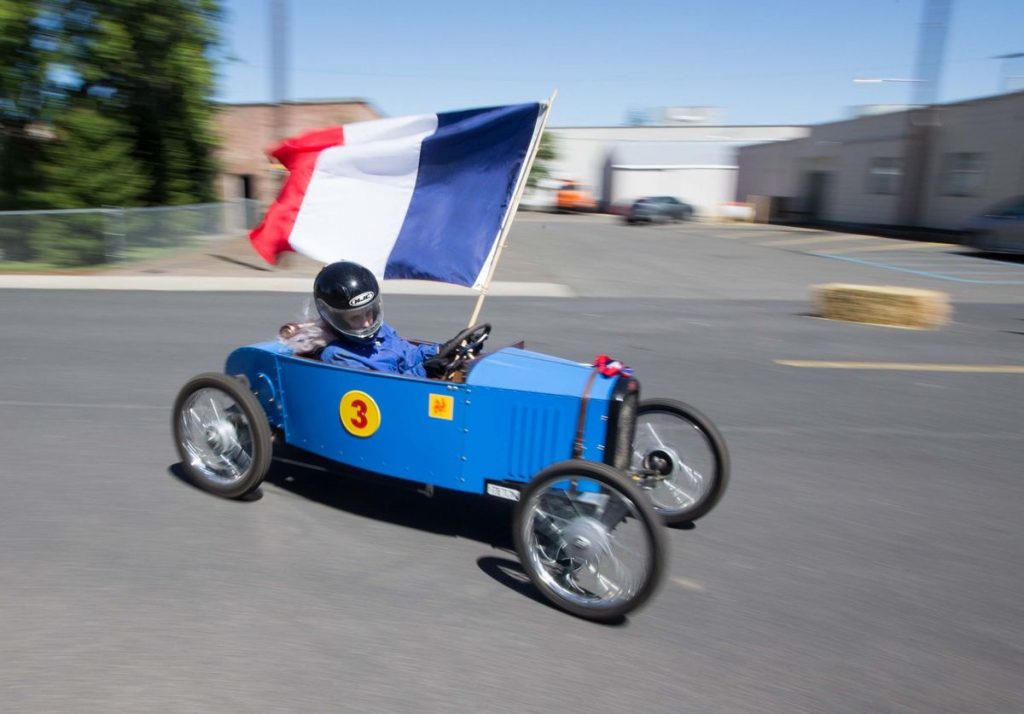
by Johnny Dumfries

